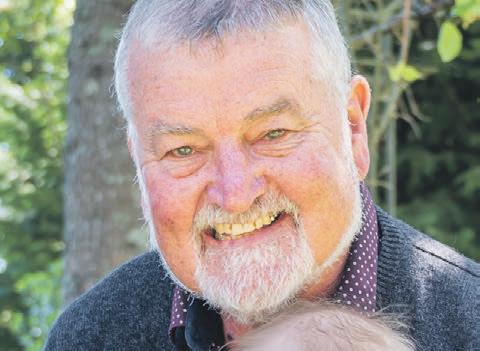

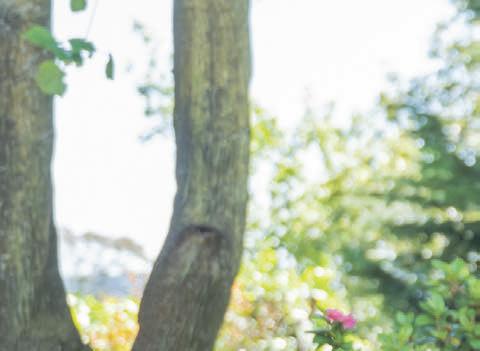
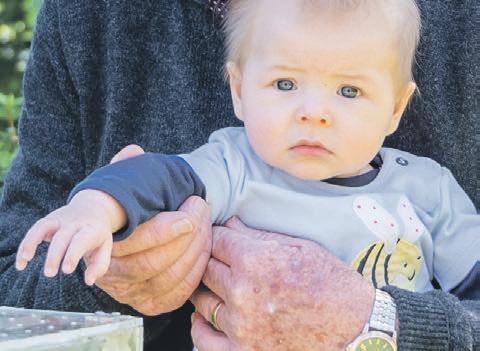

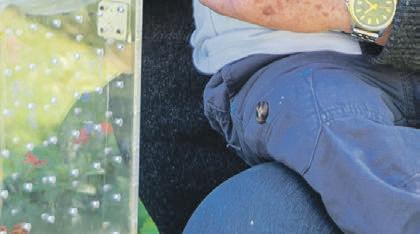




















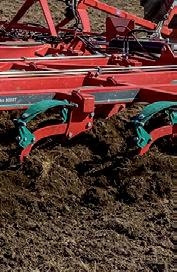
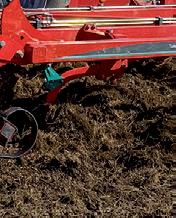





































Farming Gases Priced PG 4-5 Education/Training/Boarding PG 10 Avocado PG 14-17 Country Lifestyle PG 19-23 Dairy PG 25-27 Feed Management PG 28-29 Cartage & Earthworks PG 34-35 Geo Brunsden, pictured here with his ve-month-old grandson Robin, _talks about the role bees play in our environment. Read more in the special Fieldays liftout on Page 5. Photos: Brydie ompson. POWERFUL AND EFFICIENT PERFORMANCE KVERNELAND TURBO Tkverneland nz | www.powerfarming.co.nzPower Farming NZ
Challenging times is one way to describe what the rural community is going through at the moment.
e recently announced He Waka Eke Noa – the government’s plan for pricing fertiliser and cow burps – has drawn the ire of many farmers around the country.
e resulting proposal, unveiled in October, puts prices on both emissions of methane (mainly from cow and sheep burps) and emissions of nitrous oxide (mainly from fertiliser-enriched livestock urine), while allowing farmers payments for doing good for the climate by planting and caring for carbon dioxide-sucking trees.


To determine their bill, farmers will plug a list of inputs into a calculator: farm area, livestock numbers, how much meat or milk they produce, and how much fertiliser they use on their paddocks. More can be found about this plan, from both sides of the fence, in this edition of Coast & Country News.


Another hot topic at the moment is the unprecedented frost that hit the country back in October. Despite the frost protection many growers had in place, many had reported severe damage to crops.

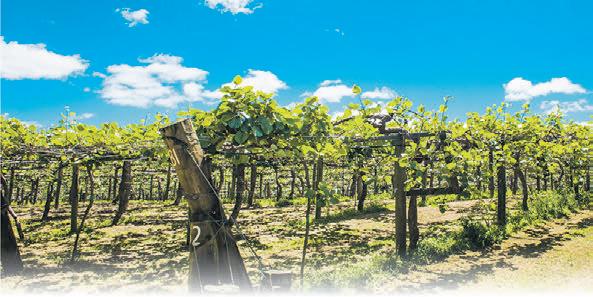
Zespri reports the full extent of the damage, in terms of what this means for many individual


growers as well as the total volume of fruit produced and the nancial rami cations for the industry will not be known for quite some time yet.

is means the stress within the industry created by the frost will be a slow burn.






“After a season of quality issues, the impact of frost damage is compounding the pressure already in the industry,” says NZKGI CEO Colin Bond in a frost update sent out to growers.

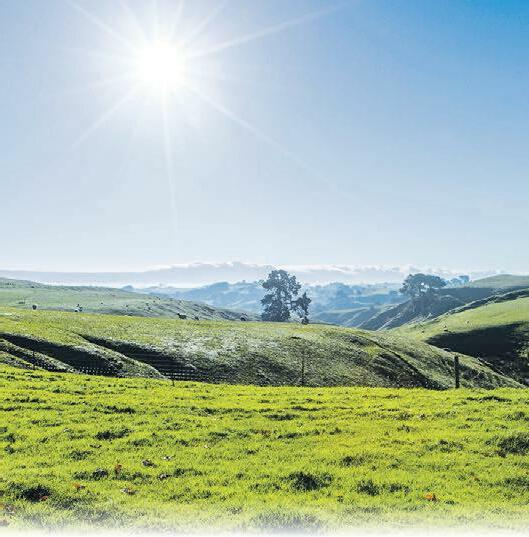
“One of the most important things we can do at this time it is to look after ourselves and check in on those around us, be it family, friends, colleagues or neighbours.
“While it’s easy to ignore the increased pressure that the frost has brought some, it is important to make time to manage stress.”
People are being advised to reach out and ask to help where needed. More information can be located on the NZKGI website.
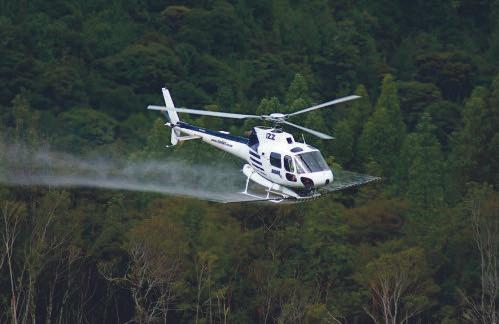

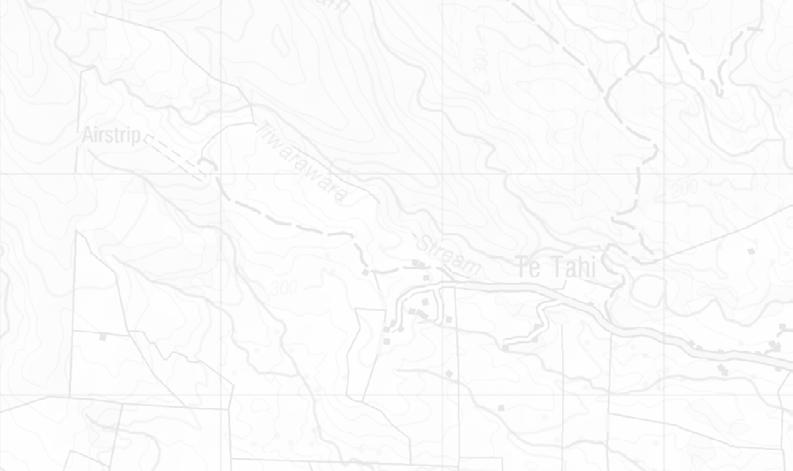
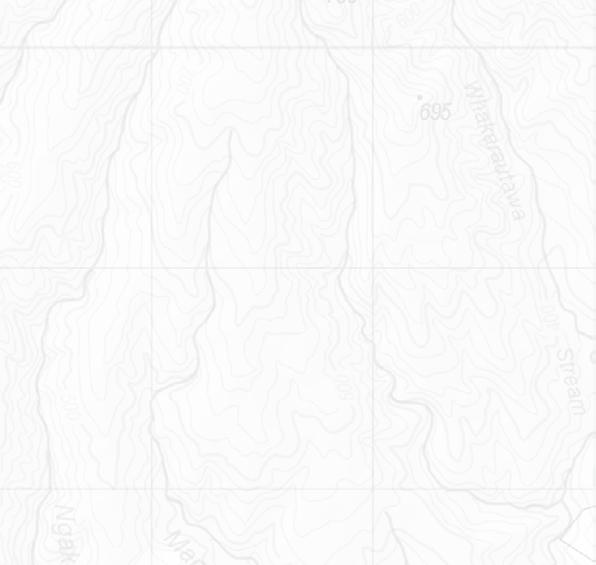
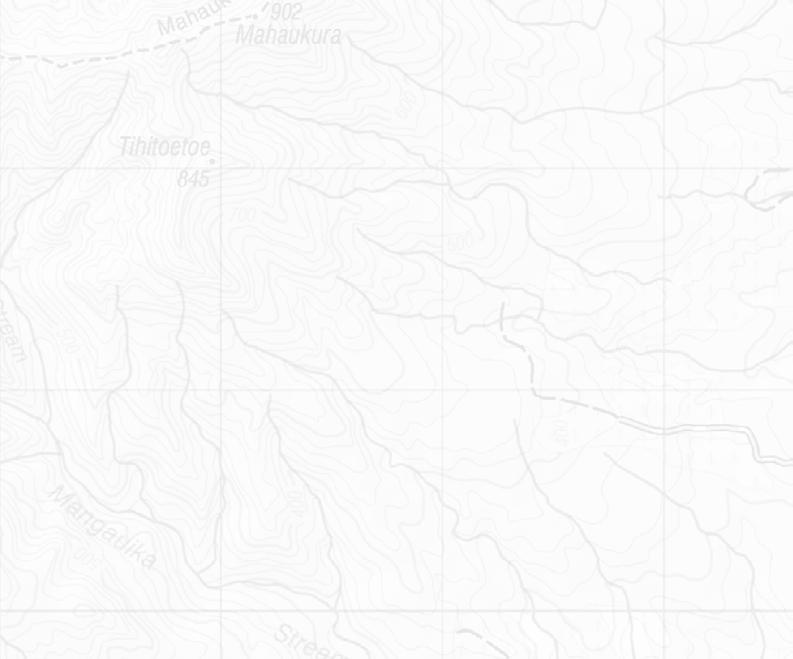

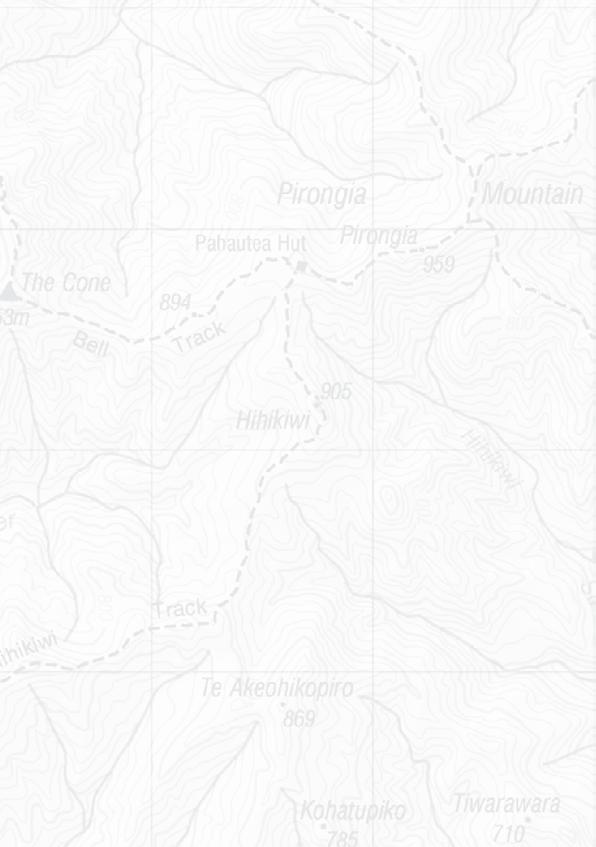
One good things people can look forward to, is the return of Fieldays.

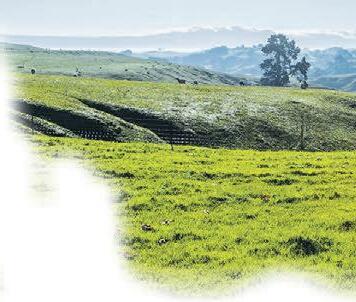
Usually held June, this year’s agricultural event is being hosted at Mystery Creek from November 30 – December 3.
Check out more in our Fieldays liftout in this edition of Coast & Country News.


Other information can also be found on the Fieldays website.


 Letitia Atkinson
Letitia Atkinson



Page 2 COAST & COUNTRY NEWS
Waikato orchard devastated by severe frost
Monavale Blueberries are truly devastated by the loss.
“ is was the worst frost in the three-generation history of our orchard. Blueberries only ower and fruit once per year, so we won’t get another chance to produce a crop for another 12 months. Despite ying two helicopters as frost protection, the weather event was so severe that they couldn’t save the crop,” says Monavale Blueberries director Marije Banks.
“We estimate that we’ve had a 90 per cent loss - more than 300 tonnes of blueberries. is loss could be


greater if the plants are unable to bounce back and need replanting which is a huge investment as blueberry plants take ve years to produce,” says Orchard manager Oliver de Groot.


Many orchards throughout the Waikato su ered losses that night and are concerned about the ow on e ect it may have on their workers, suppliers, transporters, and customers.
Monavale usually export 90 per cent of their crop but now predict they will only supply locally this year.
A severe frost back on October has seriously jeopardised the amount of fruit that will be available this season.
On the night of ursday, October 13, 2022, Waikato orchards were subjected to a severe frost which caused extensive damage to orchard crops such as blueberries.

at night, Heli A1 team of Davin Mudford, Alex Mudford and Warrick Wright, were on standby as the rst call for Monavale Blueberries (near Cambridge) to perform frost protection.
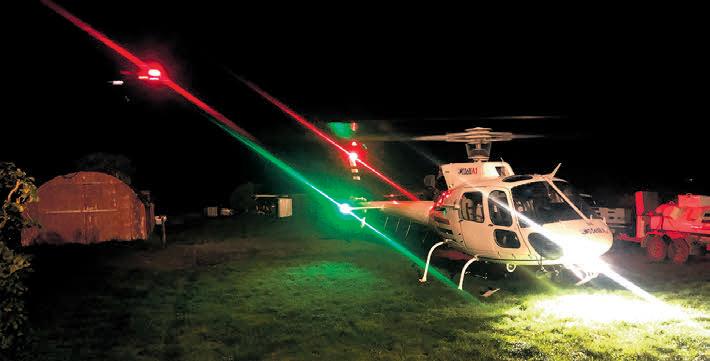
“ ey had been watching the weather constantly and we could also see it would be getting very cold heading into that weekend,” says Warrick.
Low temperatures
“We were booked by the owners at the beginning of the week and the forecast was predicting a hard frost was likely around midnight. We moved two helicopters to Monavale and went home to relax until we were called out.”

e company had left their own weather station onsite and Warrick could see the temperatures were quite low by 8.30pm, so it wasn’t a surprise
when Monavale called around 10.30pm.
“We took a 1600 litre fuel tanker to the site with us, fuelled the helicopters and were up in the air just after midnight.”
Damage

Frost protection involves using onboard thermometers to locate the inversion layer, where it is usually ve or six degrees warmer than the zero or below ground temperatures.

is is often around 50 to 60 feet above the ground. e helicopters hover above the crop, moving at a speed of 10 to 15 knots pushing warm air towards the ground to keep it above zero degrees.

“Alex and I worked on half of the 110-acre orchard each and were up there for seven hours that night, adjusting height a few times to nd warm air and refuelling two and a half times.”
e ying crew and those on the ground noticed a real plummet in temperature just before dawn and the pilots found it harder to locate warm air.
“We stayed up there until
Despite all the monitoring and forward planning, and e orts in the air, daylight revealed that the frost damage was widespread.
Warrick explains how the conditions leading up to the night played a role in the severity of the weather event.
“Orchards mow their grass strips low in frost season so that sun during the day can warm the soils around the crops which gives o heat overnight, lessening the chances of a frost.
“ at ursday was a chilly, overcast, wet day, so as the skies cleared at night, the ground temperature dropped really fast, reaching as low of minus ve on the orchard.”
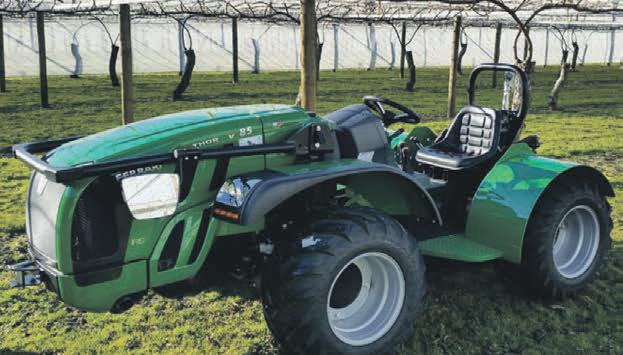
Page 3COAST & COUNTRY NEWS
Catherine Fry
Frost damage to the blueberry owers at Monavale Blueberries.
Photo: Supplied by Monavale Blueberries.
Heli A1 helicopters at Monavale Blueberries on October 13. Photo: Supplied by Heli A1.
S-1 HotSpring·�.::!!f1 PortableSpas TheWorld'sNo.1SellingPortableSpa 34 Chapel St, Tauranga • 0800 446 877 • SpaShop.co.nz OPEN 7 DAYS: 9am- 430 Weekday, 10am-5pm Saturday, 12pm-5pm Sunday Call us today...
From fertiliser and cow burps to native bush:
It’s here: the Government has unveiled its plan for pricing fertiliser and cow burps, which together form around half New Zealand’s o cial climate tally.
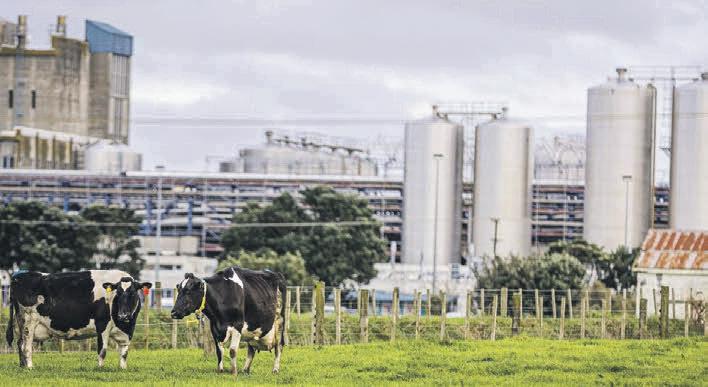
Farming gases have never been priced in New Zealand before, and to devise a new system, political leaders have blended the farming industry’s proposals with selected counter-proposals from the independent Climate Change Commission, topped o with a few tweaks of their own.
e resulting proposal was unveiled on Tuesday, October 11, and puts prices on both emissions


of methane (mainly from cow and sheep burps) and emissions of nitrous oxide (mainly from fertiliser-enriched livestock urine), while allowing farmers payments for doing good for the climate by planting and caring for carbon dioxidesucking trees.
To determine their bill, farmers will plug a list of inputs into a calculator: farm area, livestock numbers, how much meat or milk they produce, and how much fertiliser they use on their paddocks.
e proposed pricing
system – seen by Stu – applies to farmers who are GST-registered and who meet thresholds for fertiliser use and herd size.
Climate Change Minister James Shaw says parts of the scheme will evolve after 2025, re ecting the “imperfect” nature of some features.
On the positive side, farmers will also get nancial rewards for using burpghting technology, such as low-methane sheep breeds or cattle feed supplements.
At least some of these options are expected to be ready and available to buy in time for the scheme’s 2025 kick-o .

Money from burp and fertiliser levies will be used to run the scheme as well as
recycled into payments for tree-planting and forest protection, and introducing climate-friendly technologies on farms (therefore reducing the total bill for farmers who adopt them).

e plan isn’t quite what farming bodies wanted, and nor does it meet all the climate commission’s concerns –let alone the concerns of environmental lobby groups. But it marks a milestone in a plan to price agricultural emissions that has been on the table in some form for 20 years.
e proposal shows the backstop of rolling farming into the Emissions Trading Scheme (which prices carbon dioxide emissions from
vehicles and heavy industry) is rmly on the back burner.





Instead, the Government is suggesting bringing in a processor-level levy on farm emissions if a farm-level system isn’t ready by 2025.
Here’s what’s proposed:
Methane price (livestock burps)
A proposal to have farm bodies nominate their own representatives to a powerful price-setting board did not make the cut with Cabinet.
Instead, Government Ministers will set the price for methane, after getting advice from the Climate Change Commission and also consulting farmers. ...continued
Page 4 COAST & COUNTRY NEWS
Devising a fair system for trading methane would have been too di cult to do by 2025, Cabinet concluded. Photo: Vanessa Laurie/Stu .
STOP Have YOU protected your property to alert you when this type of thing happens? Your one stop Shop for all your Technology and Security Needs: • Security Alarms • 24/7 Monitoring • Access Control • Gate Alerts • CCTV Surveillance Systems • Data & Fibre Networks • Local & Long Range Wi-Fi & Data Plus many other types of Electronic Surveillance products! Make the right choice now, CALL the No.1 Company for Technology 0800 936363 Are your Cameras giving you the results you would really like to have? Well now with the latest technology - Crystal Clear Cameras are available to everyone. See the face of that person of interest clearly, read the number plate of that vehicle or see what they put in their pocket like never before. Call us today, and we will see if we can help you! Let us show you the future because it’s here NOW! Demo Vehicle available in Auckland / Waikato & BOP Areas Nationwide Service - (well almost!) www.smartway.co.nz 07 824 5566 info@smartway.co.nz one shop For: Shopping Malls, Commercial, Residential, Farms / Rural Properties, Schools & Other Government Buildings Install a Gate Alert System yourself so you know when someone enters your property. Available as 1 to 4 Gate Systems. (2 or 4 Channel Base Stations) Prices start at $650.00 + GST for a single gate. Call Now for a Price IMPORTANT CHOICE ST Voted
how farmers
continued...

Consulting emitters about the price of climateheating gas makes this scheme di erent from the Emissions Trading Scheme – under the ETS, emissions are capped, and the price of carbon dioxide is set by the market without consultation with polluters.





















e methane price will change either every year or every three years (Cabinet has not decided which, and is asking for feedback).
e price will be based on how New Zealand is tracking towards meeting its international promise to cut methane by 10 per cent by 2030, down from 2017 levels, the consultation material indicates.

Government discussion documents seen by Stu say a cap-and-trade system would have been more responsive, and would have given more certainty of meeting New Zealand’s targets, but the Government deemed it too complex to bring in by 2025.
Speaking ahead of the announcement, Shaw says he would have preferred a trading system, rather than having politicians set the price – since the price could be vulnerable to lobbying. However, work is not far-enough advanced for trading methane to be in place by 2025, he says.
e cap-and-trade option remains an option for the future.


“It wasn’t one of the options that He Waka Eke Noa (the industry partnership that came up with the rst proposal) put a lot of work behind,” says Shaw, adding that it’s politically and technically hard to divvy up emissions for trading between farms.

Asked about calls to regulate methane using an alternative metric to the commonly-used GWP100 (a system which averages methane’s heating impact over 100 years, thereby both under-counting its short term impact and over-stating its long-term heating), Shaw said the short-lived nature of methane was already built into New Zealand’s target of reducing methane by 24-47 per cent by 2050 (as compared with long-lived carbon dioxide, which has a target of net-zero).
Nitrous oxide price (fertiliser and animal urine) Like carbon dioxide, nitrous oxide is a long-lived gas.













e Climate Change Commission recommended the Government should price this gas as soon as possible, by slotting synthetic nitrogen fertilisers into the ETS.

Ministers are weighing this advice up against the industry’s proposal that nitrogen fertilisers belong with the on-farm price from 2025.
Nitrous oxide will be based on what carbon dioxide emitters pay under the ETS, but with a hefty 95 per cent discount (the rate negotiated by now-ousted New Zealand First when the party was in coalition with Labour).
e agriculture industry, which came up with the rst sketch of a farm gas pricing scheme under the He Waka Eke Noa partnership, assumed that
discount would still apply.
e Government has also continued to run with it, and built the discount into its plan.


e discount will be phased out at one percentage point a year, slowly pushing up the price of nitrous oxide.
Shaw says modelling suggests that even with the discount, the price will be enough to prompt farmers to shrink emissions su ciently to meet New Zealand’s emissions targets.
e Government is seeking feedback on two pricing methods: pricing fertiliser at the farm or grower level, or rolling a fertiliser levy into the ETS and getting manufacturers and importers to pay the levy.


Credit for trees

Long-term, the Government wants all planting and bush on farms to sit inside the ETS, and earn credits inside that system, provided farmers can prove they’re sucking in added carbon dioxide from the atmosphere.


at would put all landowners – farmers or not –on the same footing when it comes to their planting. However, the proof isn’t yet there for some plots



emissions

of vegetation to meet international standards for counting carbon, Shaw says.
e proposed plan is for landowners and landowner-supported groups to be able to obtain the research and proof needed to get wider classes of planting into the carbon accounting system, so the sole burden doesn’t rest with the Government, says Shaw.
In the meantime, the plan includes an interim system where the Government pays farmers grants directly to encourage carbon to be sucked in by planting along waterways, shelter belts and looking after native bush on farmland.
Money for these grants will come from the burp - and fertiliser - levies.


What’s next?
Feedback on the plan is open until November 18, and a nal report due in December. e Government plans to introduce a draft law implementing a pricing plan in 2023, before pricing kicks in on January 1, 2025.















































Page 5COAST & COUNTRY NEWS
Rina Walker and Terry Isson at Ngāti Pukenga’s food garden, just out of Tauranga. e iwi and scientist are working together on a trial to absorb carbon dioxide by sprinkling crushed rock on farmland. Photo: Dominico Zapata/Stu .
Eloise Gibson/Stuff
will pay for their
P: Nathan: 022 573 8030 | E: sales@boptractors.co.nz www.boptractors.co.nz *Terms & conditions apply. Photos may show optional extras. Designed for your world MULTI TASKER MULTI TOOL >>Models from 25hp - 50hp >>Cab & Non Cab options >>Yanmar & Perkins powered >>Multiple attachment options available The for the See you at Fieldays site B21, B23 FARM SERVICES HOMEOPATHIC
the orchard
While


persimmon growers in the Waikato have called it a day, another orchard
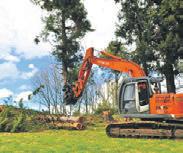
heading into its second season with a new generation of growers.
Geo Peach of Holyoak Orchard shut down his persimmon operation in June after nearly 40 years of growing.
Originally from a pastoral farming background, Geo along with a group of enthusiastic young horticulturalists, answered the

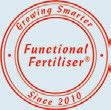





government’s call to ‘diversify’ and entered the growing business in the early 1980s.

“When I came here, I didn’t know what I was going to grow,” Geo says.
“I looked for something not everyone else was into. With persimmons, it takes eight years to get the rst crop and 13 years before you can get a return.
“ ere wasn’t any knowledge around to begin with [about growing persimmons] and we worked closely with the MAF and [Crop & Food Research] Ruakura.”
Getting it right
Geo bought ve hectares near Matangi, which, at its peak, had about 1600 trees producing more than 15,000 trays of persimmons for export in a good year.
Holyoak Orchard would usually complete 10 rounds of picking to get the right colour in the fruit, and 80 per cent of the crop was sold before it came o the trees. Exporter Cape Produce took everything, Geo says.
With airfreight costs rocketing from $1.20/kg to $5/kg, e ectively cutting Geo ’s income by onethird, the 74-year-old intends to sell the property and retire to Hamilton with his wife, Leigh.

“It has been lucrative and enjoyable and while Covid-19 has thrown a few curveballs, things will settle down again in the future.”




Half the trees on the orchard will be removed but the covered rear 0.6-ha section of the property will remain in case the new owner decides to continue production.
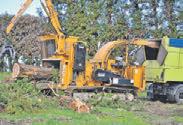
Available to o er advice
While describing himself as a bit ‘old school’ with his own way of doing things, Geo says he will remain available to anyone needing advice.
“ e aim is if someone takes over, they can come to me for advice,” he says.
“ ey can take as much or as little as they like.
“Plenty of growers would like some help.”
Persimmon Industry Council manager Ian Turk says Geo was the president of the Persimmon Growers Association for many years and a Waikato representative on the Persimmon Industry Council – remaining in that position until his retirement this year.

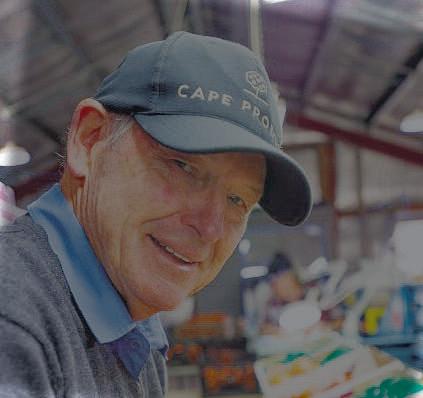
“He has a lifetime of skills and experience including developing exports to the exacting Japanese market,” Ian says.
“Geo was always someone I could call for practical advice, even in the middle of packing when he was extremely busy. I will miss the many discussions we have had over growing persimmons and the state of the industry.”

Persimmons are not a crop from which quick returns can be expected, Ian says, however, with about 30 export growers, mostly in the warmer parts of the country, a steady growth in production is expected in coming years.


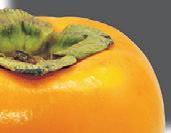

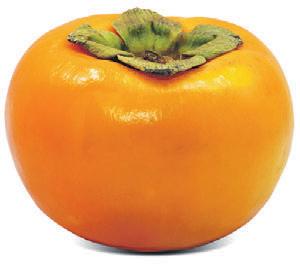
New owners
Meanwhile, new growers have purchased Long Ridge Orchard, located almost directly across the Waikato River on Hakarimata Road.
omas and Becky Zhang immigrated to New Zealand in 2012 seeking a quiet life with less educational pressure on their children.
Becky works as a translator for several government agencies in Auckland, including the Ministry of Business, Innovation and Employment, Ministry of Justice and Police, and omas has previous horticultural experience from a family vegetable growing operation in China. e couple initially looked at purchasing a kiwifruit or avocado orchard.

“We looked around Tauranga and the Bay of Plenty and couldn’t nd anything suitable,” says Becky.



“Gold kiwifruit were too expensive, we couldn’t a ord to buy in. So, we looked further and found this property.
“Persimmons are very popular in China, although there they grow a di erent variety. e rst time we tried New Zealand persimmons we found them [Fuyu variety] very tasty. Persimmons are also seen as a sign of good luck and good fortune in China. In Asia, if people have a yard, they’ll grow a persimmon tree. ey [persimmons] are also hung on strings until they’re dried like raisins, which can be used in a persimmon cake.”
E orts are underway to grow exports in the more di cult markets including China and the United States.



Page 6 COAST & COUNTRY NEWS
two major
is
Geo Peach closed his orchard after 40 years of growing.
Changing a guard on
Source: Horticulture New Zealand Specialising in Removal / chipping of whole trees On site chipping for stand off pads Wood chip for sale Orchard shelter removal Stump removal Woodlot marketing of all tree species Specialising in • Removal / chipping of whole trees • On site chipping for stand off pads • Wood chip for sale • Orchard shelter removal • Stump removal • Woodlot marketing of all tree species Check us out on Facebook! Cost of tour based on twin share. For an itinerary please ring MARGARET www.margaretsgoldentours.com TOLL FREE 0800 77 00 70Enquiries any time: Phone: 06 357 3619 Mob: 027 269 4277 Email: margaretjjones13@yahoo.com 2023 SOUTH ISLAND TOUR 2023 BAY OF ISLANDS TOUR 20 DAYS – 12 March 2023 COST $4,450 14 DAYS – 27 April 2023 COST $3,750 2022 SOUTH ISLAND TOUR 19 DAYS – 7 November 2022 COST $4,450* *$170pp FAREWELL SPIT TOUR INCLUDED IN COST ALL TOURS INCLUDE BREAKFASTS & DINNERS
Scion scientist a finalist in NZ Biosecurity Awards

A Bay of Plenty Scion scientist has helped to discover a biological control for the unwanted giant willow aphid.
Stephanie Sopow, a forest entomologist at Scion in Rotorua, played a leading role in the team from Scion, Plant & Food Research and Apiculture NZ whose collaborative research led to the release of a parasitoid wasp from California as a biological control for the invasive giant willow aphid, Tuberolachnus salignus.
Stephanie says it’s a privilege to be judged a nalist in the New Zealand Biosecurity Science Award category along with other scientists and biosecurity champions from across the country.
“Over many years, this research programme united people from the US, Japan, Australia and across New Zealand. We connected with citizen scientists in the US to locate enough parasitoid wasps to start a colony for testing in New Zealand.
“On release of the wasp, we engaged with many more stakeholders, including beekeepers, farmers and willow enthusiasts who were just as passionate about the research as we were.
“It was rewarding to work with so many people and contribute to what has proven to be impactful science for New Zealand’s biosecurity and biodiversity.”
Detection
GWA, an exotic pest, was rst detected in New Zealand in 2013.
It quickly became widespread, sparking alarm for its ability to cause willow tree dieback. e aphids suck the life out of willows depleting them of liquids, weakening the trees which are widely used in New Zealand for slope stabilisation, ood protection and as vital pollen and nectar resources for honeybees in the early springtime.
Feeding aphids secrete a sticky honeydew that supports the growth of sooty mould that covers cars, decks, barbeques, kiwifruit vines, fruit trees and livestock.
Pest wasps are also drawn to the honeydew, creating a twofold problem for the beekeeping industry. e honeydew leads to an increase in pest wasps that kill honeybees and rob honey. Beekeepers also lose productivity because honey produced from this honeydew is granular and can’t be extracted.
e total impact of GWA has been estimated to



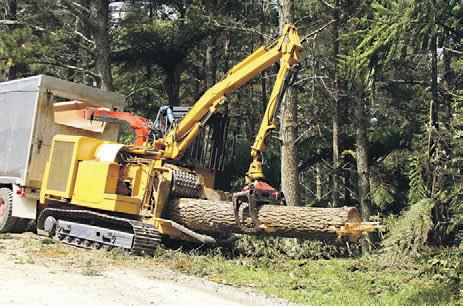
be more than $300 million each year.
Pesticides are not an option for GWA control because they would transfer into the honeydew, putting nectar feeders such as honeybees, tui and bellbirds at risk.
Stephanie and her team’s discovery of a parasitoid wasp from California that preys on GWA sparked three years of containment and host speci city testing, showing that the imported wasp only attacked GWA.
e parasitoid wasp was released in the autumn of 2020 and 2021, resulting in widespread coverage across New Zealand.
Control
e early impact of the wasp on GWA populations was monitored, nding that the proportion of aphid-free trees at these sites increased from 30 per cent at initial release to 86 per cent two years later.
As a biological control, the wasp is continuing to be found in new areas and GWA is becoming more di cult to locate.
e research has directly bene ted beekeepers, river managers, soil conservationists and farmers. Indirectly, the public also bene t as riverbanks become less prone to erosion and there are fewer pest wasps.
e programme was funded by the Sustainable Food and Fibre Futures Fund, Strategic Science Investment Fund, and research partners.
Stephanie is among the nalists of the 2022 New Zealand Biosecurity Awards.
e awards have been held annually since 2017, and recognise individuals, groups and organisations that have shown a commitment to supporting and promoting New Zealand’s biosecurity and the systems that uphold it.
e winners will be announced at the New Zealand Biosecurity Awards event in Auckland on October 31, after Coast & Country News went to print.
Shearing industry joins forces
Shearing and wool handling training organisations in New Zealand and Australia have signed a memorandum of understanding in a bid to address labour shortages.
New Zealand’s Elite Wool Industry Training signed the MOU with woolgrower-owned


Australian Wool Innovation and Australia’s largest shearing and wool handling training organisation, SCAA Shearer Wool Handler Training. It will allow the training organisations to work together on shearing and wool handler training consistencies.

Page 7COAST & COUNTRY NEWS
Stephanie Sopow.
RNZ






































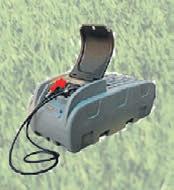

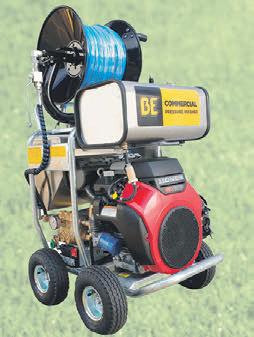







































Page 8 COAST & COUNTRY NEWS
An impossible choice between life and death
It’s an impossible choice between life and death.
To pay or not to pay for cancer treatment?
Paul Cherry has lived in both Mount Maunganui and in Asia as an operations manager in the Kiwifruit industry, spending 12 years in Japan and a further ve years in China training operations sta in fruit quality, storage, and shipping.
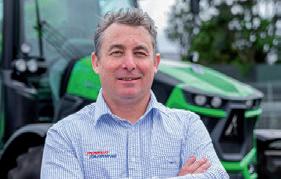


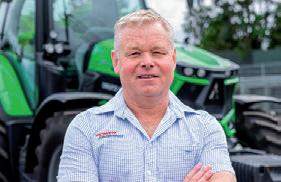
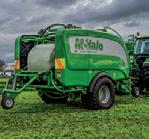
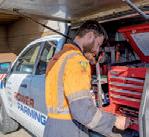
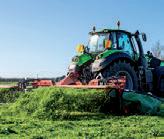
Diagnosis
It was in Japan that a prerequisite of the job was a yearly medical.
“It was quite the health MOT,” says Paul.
“ ey scheduled us in for a full day of health testing, every year. It would be non-negotiable and believe me, no rock was left unturned. is changed when I went to China as the health testing was so laborious, I chose to do it when I was home for annual leave.
“After getting used to the yearly health checks through my employer, I continued to be relatively vigilant at going to the doctor for check-ups after retiring back to New Zealand.

“But at no point do I recall being o ered a PSA blood test over those years.”
It wasn’t until Paul retired in 2012, that he complained to his GP about getting up too much at night that he carried out a digital exam and discovered something was amiss.
“ e resulting PSA testing
Paul and Robyn Cherry.
by my urologist then showed some elevation which increased signi cantly over 2013 and ended with me undergoing a radical proctectomy and follow up radiation treatment in August of that year.”
e diagnosis was that the cancer was incurable.
“Whilst we now had our own health insurance by this time, replacing the company package, there were a number of exemptions, one of which was prostate cancer,” says Paul.
Treatment
Toward the end of 2015, Paul started to experience symptoms again and his PSA levels began to elevate.
Various treatment options were discussed whilst monitoring through his urologist.
is continued until mid-2019 when his level rapidly rose to about 175 over a short period (normal results are <4 ng/ml) and subsequent scans detected signi cant metastases and a referral to an oncologist.

“At this point I was put on Zoladex, which bought my PSA back to undetectable levels.












“Subsequent conversations with my oncologist suggested that while the Zoladex was working for now, it wasn’t an exact science for how long it would work for.













“I was given three drug options to consider adding into the mix, all of which were non-funded.
“Sitting down with Robyn, my wife, we looked at the survival, quality of life gains and the ability of the drug to halt the progression of the metastases and made the call to start enzalutamide at a cost of


$5500 every 28 days.
“It’s a heavy nancial burden and I’m very grateful for Robyn’s unwavering support throughout.”
To date, the Cherry’s have spent $212,000 on enzalutamide.
“ e biggest stress I have currently, is how can I keep funding it? It’s keeping my cancer at bay but when I run out of money, the outlook is not good,” says Paul.
Funding
“I understand the challenges Pharmac face with funding and making sure every New Zealander has access to the medications they need.
“Increasing medicines funding to Pharmac needs to be a much higher priority for Government.




“But if they can’t deliver more funding then I believe they could help New Zealand men, like myself, with the costs we are paying.
“For example, they could make non-funded cancer medicines exempt from GST, part-fund treatments or o er other tax breaks to help ease the nancial burden.
“Taking the GST o enzalutamide would give me another two months of treatment, part-funding of even $1000 would give me almost 2 ½ months extra.
“It would make all the di erence.”
Meet the Sales Team
Owen Jessop - 027 337 6963



In 2019 I joined the Power Farming BOP team as Sales Manager and more recently I have taken on the BOP Branch Manager position, I have always had a passion for agriculture, my career kicked off in my earlier years as an Ag technician, from there I moved into Ag Sales through to Sales Management and various Branch Management roles. My ultimate goal has always been to prosper and nurture my team with a clear focus on the customer satisfaction and empowering the staff to make decisions that if something isn’t right, we make it right. After living in the bay for over 12 years we call it home, I’m married with two children enjoy family time, running, fishing, tennis and when I have spare time I tinker with the family project car.



Dave Horgan - 027 555 2308

Dave joined the team here Power Farming 5yrs ago He quickly earned the trust of orchardists, farmers, contractors and life-stylers in the area with his good service and integrity. In the past couple of years he has focussed in the area between Te Puna and Waihi and is currently working out of Katikati, from a site shared with Phil Robin’s AgriTech Machinery Workshop. Dave would like to help you get the right machine for the job and within your budget. Please don’t hesitate to ring him for advice about the large range of agricultural, horticultural and now construction machinery available from Power Farming.
Area: Te Puna / Whakamarama / Aongatete / Katikati / Waihi







Cameron MacNiven 027 217 3652

I have been living in Tauranga for the past 12 years and have come from a career back ground in Glazing. I grew up on farms so farming was in my blood and have recently taken on the change with my career into sales. I have a passion for hunting, especially ducks and support the local western bay of plenty fish and game club as the Vice president. I’m married with two children and a black lab as the family pet and shooting companion. I love the bay and look forward to meeting you all.
Area: Kaimai / Welcome Bay / Oropi / Omanawa / Tauranga



Hayden Riddell - 027 336 2193
Born and raised on a diary/dry stock farm on the out shirts of Papamoa, over the past 20 years I have been servicing the greater western bay of plenty in after sales service. Having grown up on a diary/dry stock farm and the working with orchardist’s I understand the needs and pressures that can be presented to owners and operators in the area. I pride myself in helping customer’s make the right decision’s and find solutions to help minimize any Interference to their operations. I’m an easy-going guy who loves spending time with friends and family, watching local rugby, fishing and playing a round of golf at the Te Puke golf club.

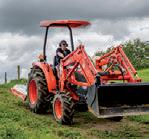
Area: Te Puke / Paengaroa / Pongakawa / Pukehina / Matata

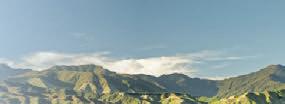

Page 9COAST & COUNTRY NEWS
oudly loc o wnedand operated100%kiwi owneD Power Farming Bay of Plenty | Ph (07) 543 0021
Horticultural industry needs skilled staff

e demand for skilled horticulture sta has never been greater – and the acquisition of those skills never so easy, thanks to an innovative training programme.

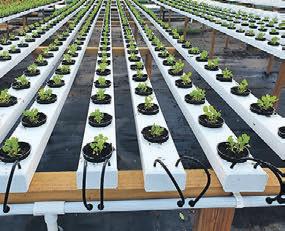
Franklin Institute of Agri-Technology, also known as Franklin Agritech, has been operating in the Franklin and BOP regions since 2016

o ering one-year programmes which cover horticulture production with the opportunity to acquire traderecognised certi cation.
Franklin Agritech director Raj Saini says entry requirements for the courses are NCEA Level 2, age 17 or more and physically t.

“ e fee is $5250 per annum but fees free apply to many school leavers.

“ e programmes have been developed to meet the operational needs of horticultural producers on one hand, and statutory requirements of quality, safety, and traceability of the ‘Greens Supply Chain’ on the other hand.
“Our students train on commercial production sites in the Franklin and BOP regions where they combine academic knowledge of horticultural systems with hands-on practical skills.
“ e comprehensiveness of the courses mean they develop a thorough understanding of the production requirements with awareness to commercial sensitivities of this business.”
Raj Saini says Franklin Agritech has a 100 per cent success rate of job placement.
“All our graduates are working fulltime in horticulture shouldering


 hydroponic system.
hydroponic system.
tangible responsibilities.
“Demand is at record levels so I would encourage anyone wanting a ful lling, exciting career, working in one of New Zealand’s most valued industries, to contact us on: horticareers@gmail.com 09 236 37 38 or visit: www. at.ac.nz”

Bringing science into primary school children’s lives

Chris Duggan has been recognised for her hard work and perseverance in bringing her charity, House of Science NZ, to where it is today.
e House of Science CEO was presented with the Wintec Secondary School Teacher/ Educator award in September.
Chris graduated from Massey University with a degree in biochemistry and spent her early working years in di erent labs before taking a position as a lab technician at Kawerau College.
“When the school needed another science teacher, it was apparent that I was wellquali ed to teach and I moved into a teaching role, training on the job,” she says.
Her next move was to Tauranga Girls’ College, as Head of Science and teaching general science and chemistry.


“I saw wave after wave of students who were starting high school with no experience of science and that was a real concern.”
A 2012 Education Review O ce report shows that 73 per cent of primary schools seen were doing no science at all.

Chris was horri ed by this, as New Zealand prides itself on being a developed country.
“We aren’t feeding the curiosity for science in our primary school students and fostering their wondering.”
She points out that this has a knock on e ect on the continuation of expert scienti c knowledge within the country and growing the future workforce.
“By the age of 10, many children have decided what subjects they enjoy and what they might like to do in life.
“If they’ve had no exposure to science,
then that won’t be in the mix.
“Research shows that by 13/14 years old, the boat for introducing them to new subjects has been missed.”
Chris believes teachers deserve better and need access to these resources. Her next goal is to secure long term and sustainable funding for science resources in New Zealand schools.
Page 10 EDUCATION/TRAINING/BOARDING
Students visiting Franklin Agritech.
e
Catherine Fry
It’s important to foster primary school’s children curiosity of science.
Chris Duggan, the face behind the idea of House of Science.
www.eggs.school.nz EPSOM HOUSE Boarding Positions 2021/2022 Epsom Girls Grammar School For further information please contact: Epsom House Boarding Administrator - Chris Barnes Phone (09) 970 6808 Email: cbarnes@eggs.school.nz Limited places available for 2021 • • Access to a state school with a tradition of academic excellence for young women from outside the Auckland area. • A wide range of courses and co-curricular activities in sports, culture, arts and leadership. • We encourage self-esteem and confidence with strong links between home and school. • Full board with weekend leave for young women from Year 9 to Year 13 with caring and supportive staff in a safe living environment. • We currently have a small number of places available for Year 9 entry in 2023. For further information please contact: Epsom House Boarding Administrator - Celeste Cotter Phone (09) 970 6808 Email: ccotter@eggs.school.nz www.eggs.school.nz C2211kwEpsom Epsom Girls Grammar School Te Kura Tu a rua o Nga Ta itamahine o Maungawhau EPSOM HOUSE - Boarding Positions 2023 BOOK NOW as places are limited orformoreinformation contact: Successful farmers understand … ✓cows ✓ business risks ✓ farm systems ✓ environment DPSL Farm Tutorial Workshops Designed for owners managers advisers and veterinarians Unique, popular and in-depth course combining classroom andon-farmpracticalteaching DPSLFarmTutorial 2023 -24Workshop includes 10 1-day tutorial sessions (currently based in the Waikato) Tutors are DPSL principals Bryan McKay BVSc. MVSc. and Sue Macky BVSc. (dist.) DPSL a long established, successful cow management and nutrition consultancy group. (0 7)8582224 027 492 8212 dps@dairypro.co.nz BOOK NOW as places are limited orformoreinformation contact: Successful farmers understand … ✓cows ✓ business risks ✓ farm systems ✓ environment DPSL Farm Tutorial Workshops Designed for owners managers advisers and veterinarians Unique, popular and in-depth course combining classroom andon-farmpracticalteaching DPSLFarmTutorial 2023 -24Workshop includes 10 1-day tutorial sessions (currently based in the Waikato) Tutors are DPSL principals Bryan McKay BVSc. MVSc. and Sue Macky BVSc. (dist.) DPSL is a long established, successful cow management and nutrition consultancy group. (0 7)8582224 027 492 8212 dps@dairypro.co.nz
The new faces of horticulture compliance
A passion for the horticulture industry has seen Bay of Plenty’s Murray and Sarah Clarke become immersed in the avocado industry and, in July this year, the kiwifruit industry when they acquired one of the country’s most well-known food safety compliance companies, CME Consulting.
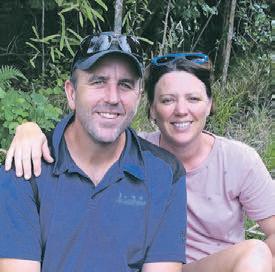
Developed by industry stalwart Chris Mason nearly 20 years ago, CME Contracting provides a wide range of compliance support and assessment services to the New Zealand
kiwifruit and avocado industries.
Murray says all contractors to the kiwifruit and avocado industries need to have annual Compliance Assessment Veri cation which con rms awareness and compliance with the standards de ned by the Global G.A.P., Zespri and Avoco.
Standards
“ e same standards apply to growers, all compliance contributing to the industry’s commitment to global consumers that New Zealand kiwifruit is grown and processed to the highest standards of food safety.”
Views on kiwifruit spray released
e Environmental Protection Authority has released a summary report of submissions about hydrogen cyanamide, a key chemical used in the kiwifruit industry.

Hydrogen cyanamide is used in the kiwifruit industry to help buds form by simulating the e ects of frost. It is less commonly applied to apple, cherry, apricot, and kiwiberry crops, and is a component of a widely used product called Hi-Cane.

e EPA is currently reassessing the use of hydrogen cyanamide, in the wake of signi cant new scienti c data and risk assessments completed by overseas regulators.
e report summarises submissions from a public consultation on hydrogen cyanamide, which was


held from September 30, 2021 to December 20, 2021. e EPA received 202 responses, with 43 of those submitters indicating they want to speak at a public hearing in March 2023.
“ e EPA received many di erent views from a range of interested parties, including industry organisations, iwi groups and Māori businesses, NGOs, growers and members of the public,” says Hazardous Substances and New Organisms general manager Dr Chris Hill.
EPA scientists will review the technical information in the submissions and additional documents, including results from research by key companies in the kiwifruit industry.
Submitters who indicated they wish to be heard will be invited to speak to their submission at the hearing.
Murray says the CME Consulting team provide contractor and grower assessments across the country “from Northland through to the South Island”.
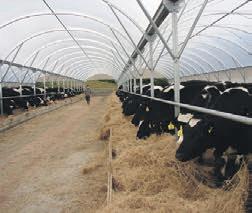
Network
“Chris Mason established a fantastic network across the industry, and we intend to continue that commitment to our existing grower and contractor clients and invite interest from others who have yet to experience the CME Consulting di erence.”
CME Consulting can be contacted on: 021 1368866 or via email: o ce@cmehort.co.nz

Page 11KIWIFRUIT
Murray and Sarah Clarke have a passion for the horticulture industry.
Mowing company taking



Trimax Mowing Systems is your local designer, manufacturer, and distributor of high-quality tractor-powered mowing equipment.


Founded in the Bay of Plenty in 1981, Trimax has been helping customers nd solutions to their toughest mowing challenges for more than 40 years by taking on a truly “grassroots” approach: o ering unmatched on-the-ground support and service throughout the life of the machine.
From the point of rst enquiry, your Trimax sales representative will talk through your individual

requirements and o er advice and guidance to suit your exact needs. ese trained experts will be on hand throughout your Trimax journey to assist with demonstrations, installations, and maintenance.
Collaboration e collaborative partnership between Trimax and their customers ensures maximum value and maximum mower life – which has proven to be over 25 years in some cases.


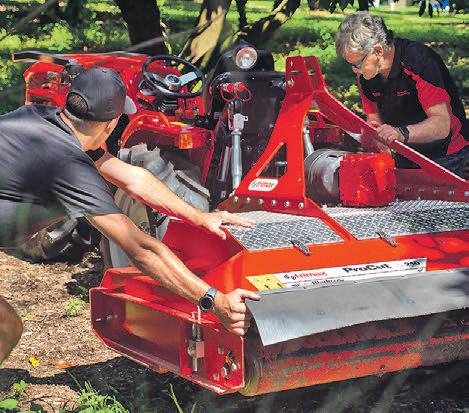
Trimax understands that downtime is not an option.
at’s why they stock their full range of spare parts for all current and previous mower models in their




























Tauranga facility.
By making this commitment, Trimax can provide next-day shipping across New Zealand for orders received by 3pm.
Orders can even be placed online through Trimax’s new and improved Parts Shop, or parts can be purchased directly from Trimax headquarters on Maleme Street in Tauranga.
Dedication

Trimax is dedicated to helping you get the best results on your turf by working directly with you every step of the way.
To learn more about what Trimax can do for you, visit them online at: trimaxmowers.co.nz or call: 07 541 0411.

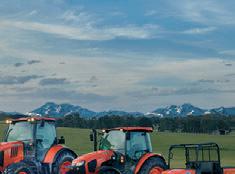
Australasia’s largest kiwifruit producer has moved to quell fears its minimum wage of $24 per hour will drop ahead of the 2023 main season.




First Union New Zealand spoke out against orchardto-market specialists Seeka after a turbulent 2022 season beset by labour issues and allegations of pay irregularities.
Union o cials alleged numerous members ended the season out of pocket despite a collective agreement with Seeka that workers would receive no less than $24 an hour.
But Seeka says many pickers earn much more and the company deserves some slack when rolling out the new agreement to several thousand workers employed at peak periods.

Despite the agreed fee of $22.75 plus an hourly labour shortage allowance of $1.25, the union claimed the employees in question included orchard workers as well as packhouse sta .
“It took us a little while to implement it uniformly company-wide so, rather than being required to top up, which puts an unfair slant on it, it simply took us a few weeks to make sure we had it in place across the
company,” says Seeka chief executive Michael Franks.
“We are paying more than 4000 people per week in the height of the season, so we might deserve a little bit of slack in getting it done. And I would say that a number of people who are on the $24 rate actually earned a lot more through the piece rate deals that are in place.”
Page 12 KIWIFRUIT
grassroots approach Clash over kiwifruit picking pay e team getting one of their mowers ready.
Dan Sheridan/Stuff
First Union New Zealand claimed some kiwifruit
pickers were out of pocket and
needed a “top-up” at the end of the season. Photo: Christel Yardley/Stu .
KUBOTA.CO.NZ
4 Te Puke Quarry Road, Te Puke www.rrtractors.co.nz KUBOTA.CO.NZ 07 573 9107 4 Te Puke Quarry Road, Te Puke www.rrtractors.co.nz KUBOTA.CO.NZ 07 573 9107 4 Te Puke Quarry Road, Te Puke www.rrtractors.co.nz 1500kg lift capacity on the M7040SU Kubota loaders o er ample lifting height and capacity, ideal for demanding livestock farming a more productive and practical operation M7040 SUHDFRONT END LOADER 68HP E-CDIS engine 8-speed mechanical synchro shuttle 1500kg lift capacity on the M7040SU Kubota loaders o er ample lifting height and capacity, ideal for demanding livestock farming 8-speed mechanical synchro shuttle 1500kg lift capacity on the M7040SU Kubota loaders o er ample lifting height and capacity, ideal for demanding livestock farming Optional QVX36 Front End loader $13,139 Powerful performance with a 95HP, 4-cylinder Designed for heavy duty work and equipped with hydraulic shuttle, Creep Speed and Autohitch for a more productive and practical operation FROM $79,500 + GST 100-135HP common rail engine with massive torque 24-speed powershift transmission with auto Super-quiet deluxe cab Bi-speed turn that speeds up front wheels Available with narrow vineyard kit 5-year extend warranty 0.9%P.A. FINANCE FOR 36 MONTHS across the MGX Series FINANCE PROVIDED BY UDC FINANCE LIMITED 8-speed mechanical synchro shuttle 1500kg lift capacity on the M7040SU Kubota loaders o er ample lifting height and capacity, ideal for demanding livestock farming Optional QVX36 Front End loader $13,139 Powerful performance with a 95HP, 4-cylinder Designed for heavy duty work and equipped with hydraulic shuttle, Creep Speed and Autohitch for a more productive and practical operation MGX SERIES FROM $79,500 + GST 100-135HP common rail engine with massive torque 24-speed powershift transmission with auto Super-quiet deluxe cab Bi-speed that speeds up front wheels tight turns Available with narrow vineyard kit 5-year extend warranty 0.9%P.A. FINANCE FOR 36 MONTHS across the MGX Series FINANCE PROVIDED BY UDC FINANCE LIMITED M7040 SUHD - WITH QVX26 FRONT END LOADER 68HP E-CDIS engine 8-speed mechanical synchro shuttle 1500kg lift capacity on the M7040SU Kubota loaders o er ample lifting height and capacity, ideal for demanding livestock farming M9540 DH Optional QVX36 Front End loader $13,139 Powerful performance with a 95HP, 4-cylinder turbo charged engine Designed for heavy duty work and equipped with hydraulic shuttle, Creep Speed and Autohitch for a more productive and practical operation MGX SERIES FROM $79,500 + GST 100-135HP common rail engine with massive torque 24-speed powershift transmission with auto shift Super-quiet deluxe cab Bi-speed turn that speeds up front wheels for tight turns Available with narrow vineyard kit 5-year extend warranty 0.9%P.A. FINANCE FOR 36 MONTHS * across the MGX Series FINANCE PROVIDED BY UDC FINANCE LIMITED M7040 SUHD - WITH QVX26 FRONT END LOADER 68HP E-CDIS engine 8-speed mechanical synchro shuttle 1500kg lift capacity on the M7040SU Kubota loaders o er ample lifting height and capacity, ideal for demanding livestock farming M9540 DH Optional QVX36 Front End loader $13,139 Powerful performance with a 95HP, 4-cylinder turbo charged engine Designed for heavy duty work and equipped with hydraulic shuttle, Creep Speed and Autohitch for a more productive and practical operation MGX SERIES FROM $79,500 + GST 100-135HP common rail engine with massive torque 24-speed powershift transmission with auto shift Super-quiet deluxe cab Bi-speed turn that speeds up front wheels for tight turns Available with narrow vineyard kit 5-year extend warranty 0.9%P.A. FINANCE FOR 36 MONTHS * across the MGX Series FINANCE PROVIDED BY UDC FINANCE LIMITED
Dr Green’s Kiwifruit Innovation Award


 Plant & Food Research scientist
Plant & Food Research scientist






















Dr Steve Green has won the 2022 Kiwifruit Innovation Award for his work to understand the impact the kiwifruit industry is having on our land and water resources.
Recognising the importance of our water resources, Steve has led the design and development of bespoke scienti c tools for measuring the ow of nutrients and water in orchards.
In conjunction with his extensive modelling expertise, he has provided the research tools for the industry to measure, predict, and optimise water use and nutrient management in kiwifruit growing locations in New Zealand and Italy.
Ambitious
Zespri chairman and award judge Bruce Cameron says Steve’s work has been instrumental in supporting the industry’s focus on sustainability and resilience.
“Steve has made a signi cant contribution to the industry over decades and remains a key leader for Zespri as we work towards achieving our ambitious sustainability goals around water and nutrient management,” says Bruce.
“Sustainability is critical for our industry - Steve’s work will enable growers to predict their water and nutrient needs and optimise water and nutrient
inputs to ensure we can continue to grow in a way that’s good for our growers, communities and the environment.”
NZKGI chair and fellow judge Mark Mayston says the award recognises Steve’s work as critical to helping safeguard the viability of the kiwifruit industry for future generations. “Dr Green’s work is helping ensure we understand what impact the kiwifruit industry is having on our environment and our water resources today, and the mitigations we can implement to protect our land and water resources, so that the industry can operate both sustainably and pro tably into the future,” says Mark. “On behalf of New Zealand kiwifruit growers, I commend and congratulate Dr Green for his valuable contribution to the industry.”
Focussed
Fellow judge Kristy McDonald KC, chair of kiwifruit industry regulator Kiwifruit New Zealand, says Steve’s work has been collaborative and focused on industry good – working with growers and fertiliser advisors involved in several research sites across the country. “His work has been critical in helping the industry understand the
environmental footprint of kiwifruit, and providing the scienti c evidence to help us understand kiwifruit’s impact, to enable informed engagement between the kiwifruit industry and the government,” says Kristy.
“We’re thankful for his contributions which has enabled the industry to develop a deeper understanding of the orchard nutrient cycle and impact on our local water ways and communities.”
Steve says it’s an honour to be recognised by the industry.
“It’s incredibly rewarding to be able to help growers understand the water needs of kiwifruit cultivars throughout their life-cycle and to reduce water use, so that together we can minimise kiwifruit’s environmental footprint and preserve our land and water resources.
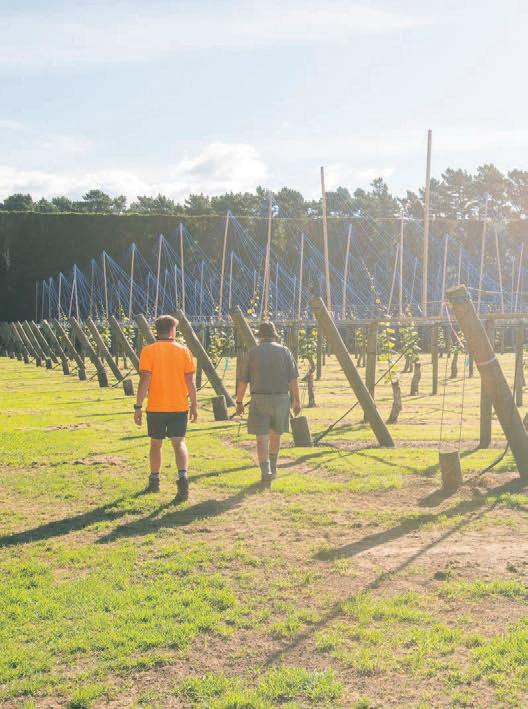
“I’m grateful for the support of my team, and the industry, as we work together to solve the challenges of this generation, so that our future generations, and the kiwifruit industry can thrive.”
MyNameisNeilWoodward.
IamadirectorofZ-Contracting-wearefamilyrun business,ourteamconsistsofthree,beingmyself,my sonandmybrother.
Ourorganisationhasbeenestablishedforover18

Wespecialisewithinthekiwifruitindustry,








have theequipmenttosprayorchardswithour
Our
We

Weholdallcertificatesneededtomeet











Welookatallchallengestohelpensureweprotect

Page 13KIWIFRUIT
understand what
impact the
Dr Steve Green with the award judges.
Dr Steve Green.
MyNameisNeilWoodward IamadirectorofZ-Contracting-wearefamilyrun business,ourteamconsistsofthree,beingmyself,my sonandmybrother. Ourorganisationhasbeenestablishedforover18 years.Ihavebeeninvolvedin applyingcropprotection programmeswithinthehorticultalindustrysince1966. Wespecialisewithinthekiwifruitindustry, We have theequipmenttosprayorchardswithour two Atomsprayers and one recently purchased Tracatom Formula tractor which is also available for mulching and mowing Our comb three accuracy. We applications. Weholdallcertificatesneededtomeet compliance. Welookatallchallengestohelpensureweprotect yourcropwithexcellence. Phone:021907621 E-mail:zcl@zanadu.co.nz 216PongakawaBushRoad
years.Ihavebeeninvolvedin applyingcropprotection programmeswithinthehorticultalindustrysince1966.
We
two Atomsprayers and one recently purchased Tracatom Formula tractor which is also available for mulching and mowing
Atoms aresetupwithradarspeedsensors,this combined with fullyautomated sprayer controllers and three nozzle ringsenhancesapplicationef ficiency and accuracy.
also useaquadbikeforstripweedspray applications.
Globalgap compliance.
yourcropwithexcellence. E-mail:zcl@zanadu.co.nz We're growing We'regrowing with you. withyou. www.humepack.co.nz
Improving fruit set in avocado orchards
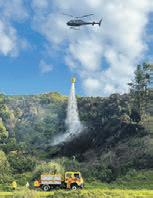
Flowering, pollination and fruit set is underway in avocado orchards, and this is the most important stage of growing avocados.
Fruit set can also present the most challenge for growers, but there are many ways they can improve the outcome. e ower to fruit ratio is very low in avocados with a mature tree producing more than one million owers, with fruit set only ranging from 0.3-0.5 per cent. ere are many factors that a ect pollination and growers should be on top of those they can control.
roughout the year, a regular pruning programme will ensure adequate light into the canopy which in turn results in owers and fruit throughout the canopy.
Bud quality
Pruning also results in better bud quality, as by pruning you are essentially ower pruning before the tree expends the energy producing the actual owers. Avocado orchards are now currently in the peak of owering and by this stage, growers will have worked through their pre owering checklist.
Pushing spring ush with the appropriate nutrient applications during
winter, harvesting some or all of the crop, completing any pruning, correcting nutrient imbalances, and having beehives present from 5-10 per cent owering, are some of the ways to set the orchard up for optimal fruit set before full owering hits.
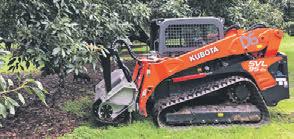
Now, the focus is on supporting the tree through very high nutrient demand and withdrawal due to the development of owers and nectar and in many cases, the existing crop is still hanging on the tree as well.
Growers can optimise fertilisation and fruit set by applying foliar fertiliser and ower sprays of speci c nutrients.


Boron and zinc are the important nutrients at this time.




Beehive numbers



If you are not regularly applying foliars then ensure you time at least one boron, zinc and seaweed foliar spray when 50 per cent of the trees are at 50 per cent cauli ower stage, 25 per cent at earlier ower development, and 25 per cent approaching full bloom.

Consider also applying foliar spray products that are high in amino acids to support any heavy owering or stressed trees.
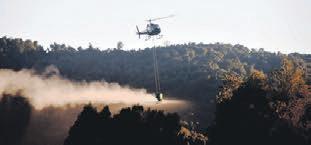
Growers are often conservative with their beehive numbers but depending

Most avocado orchards are currently in the peak of owering.

on orchard density and owering intensity we recommend having eight to 12 per hectare.
e only way for fruit to set is to have pollen moved onto the owers, and lots of it.
Encourage your bees to stay busy pollinating your owers by placing a safe source of water close to the hives so they do not have to travel far in search of water.
If, over pollination the weather conditions are not favourable for bee activity, consider applying a pheromone spray.



Attracting bees

Bee-Scent is a pheromone-based liquid formulation that attracts honeybees to treated blossoms and encourages foraging behaviour.

Soil moisture needs to be managed over fruit set as any water stress can cause higher fruitlet drop.
Should you be fortunate to have irrigation, now is the time that this investment pays o . Use moisture meters to ensure you are applying the required amount of water through dry periods.
If avocado growers need assistance or advice over fruit set they can contact the teams at Avoworks: www.avoworks.co.nz or Just Avocados: www.justavocados.co.nz



Page 14 AVOCADOS
It’s a double gold for the World Avocado Congress New Zealand 2023 with TOMRA Foods and Maf Roda Agrobotic joining as global gold sponsors.
“We’re thrilled to have such globally recognised companies supporting the World Avocado Congress in New Zealand,” says CEO of NZ Avocado and President of the World Avocado Congress Committee Jen Scoular.

World showcase
Taking place from April 2-5, 2023, in Auckland, the World Avocado Congress will showcase New Zealand’s leadership in avocado growing, sustainable environmental practice, beautiful orchards, ethical work treatment and great tasting avocados.

“ e congress is a unique opportunity to connect with the global avocado community and showcase developments to the world, while also being part of a collective approach seeking to increase both supply and demand of avocados.”
TOMRA Foods and Maf Roda Agrobotic join Mission Produce, the rst platinum global sponsor, and New Zealand sponsors including Darling Group, Avoco, Radfords Software and Seeka.


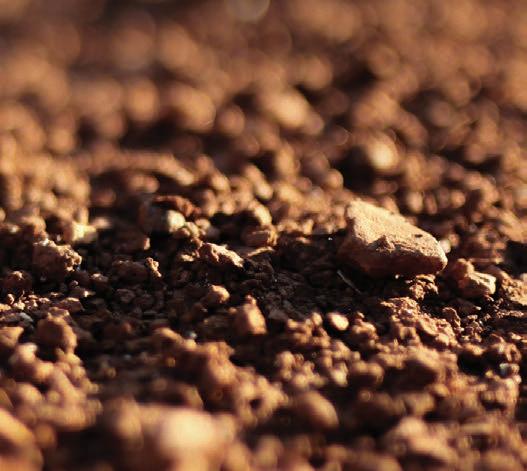
Event partners include Plant & Food Research, Auckland Unlimited, Tourism New Zealand and Horticulture New Zealand.


TOMRA Food designs and manufactures sensorbased sorting machines and integrated post-harvest solutions transforming global food production to maximize food safety and minimize food loss.
TOMRA Food is a division of TOMRA Group, founded in 1972.



Maf Roda Agrobotic is a multinational engineering company which has specialised in the development and production of turnkey conveyor lines for automation, grading, electronically sorting and packaging fresh fruits and vegetables for more than 50 years. Interest in the World Avocado Congress continues to grow with more than 500 attendees registered from 14 countries to date.
Wealth of experience






e scienti c and marketing committees have developed programme outlines and are now seeking abstracts from researchers, innovators and movers and shakers.
e online exhibition portal is now open on the World Avocado Congress website.
“We’re also delighted to announce marketing guru Tania Bui as the second independent director onto the board of World Avocado Congress NZ Ltd,” says Jen.
Tania Bui is the marketing transformation lead (Asia Paci c) at Suntory Beverage & Food, and joins Bjoern Spreitzer, general manager New Zealand and business events at Tourism NZ, and Dave Flett and Jen Scoular from NZ Avocado on the World Avocado Congress board.

“ e wealth of experience Tania and Bjoern bring is invaluable as we aim to deliver an incredible World Avocado Congress.

“ is is one of the rst global trade events since New Zealand opened its borders, so it provides an amazing opportunity to sell not just the avocado industry, but New Zealand also.”

To register and for more information about the World Avocado Congress New Zealand 2023 visit the website: wacnz2023.com

AVOCADOS
Jen Scoular, CEO of NZ Avocado and President of the World Avocado Congress Committee.
MYSOIL CLASSIFICATIONTM
Kat walking
From childhood, Kat Macmillan was aware of the potential damage to the environment that human activity can have.



“My dad is a Greek sherman and when I was small, I would go out on the trawlers and see the devastation caused by drag net shing,” she says.
“ e sponges, the coral, everything would get pulled up and die and I used to spend my time trying to throw as many ‘junk sh’ as I could back into the ocean in the vain hope that they’d survive.
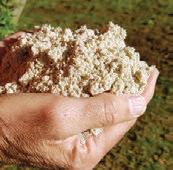
“I switched to a plant-based diet when I was seven. I’ve always been a big animal and nature lover.” Later at university, Kat studied for a degree in Zoology.

“When you see the science of mass extinction





and loss of rain forests, and now with climate change as well, it’s a real call to action,” she says. “I don’t want to see our planet losing all its wildlife. at’s what we’re in danger of right now.”
Pruning back trees

When she and her husband bought eight acres at Welcome Bay that had a small neglected avocado orchard on it, they were determined to restore it using sustainable practices.




“ e trees were overgrown and very hungry.
“ e previous owners had also been burning their household rubbish in the orchard so even eleven years later we’re still nding charred plastic,” says Kat ...continued


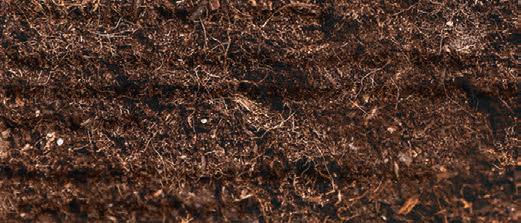
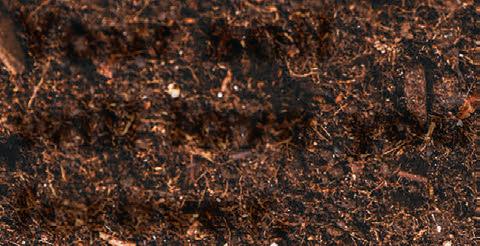




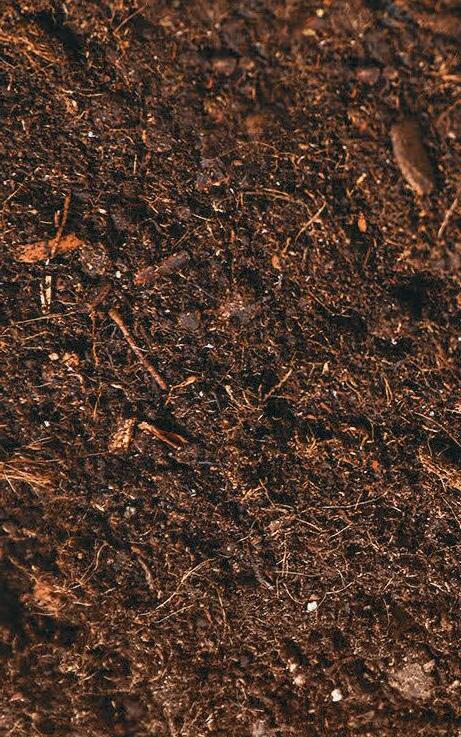


Page 16 AVOCADOS
Your Solution for all things Irrigation Call Our Experts on 0800 130 905 www.irrigationexpress.co.nz Available at: Your soil will love you forever. 100% natural, BioGro certified Supplies readily available source of calcium and sulphate sulphur to support soil health and plant growth. For more information scan the QR code or go to gypsum.co.nz
the sustainability talk
“On our land, we’ve planted about 500 native trees and shrubs along the drain way that run through our property, and we have more tuis and
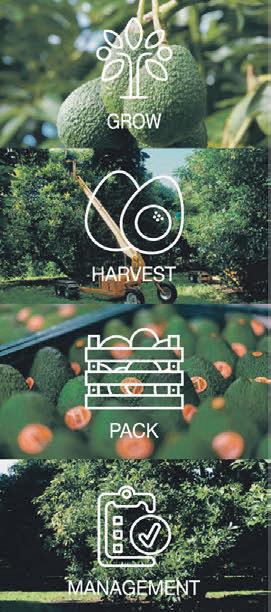


when

It makes
rst
species then the wildlife
recovers. Some parts of our eight
don’t see it for a

and when we go back it’s like ‘whoa! Fantastic – ponga with little koru
continued...
e Macmillans cut the trees to half their size with some drastic pruning.
“If you let them grow too much, they form a high canopy so underneath there’s nothing growing and you need really tall hydra ladders to pick them so it’s not e cient. Pruning them back does improve the yield but you must do it in the right way.”
Restored ecosystems
She is also a big fan of composting.
“From our shelter belt trim, we had a big pile of pine chip and mulch, so we let that rot down for about four months and we’re now feeding that out around the orchard. If you do it too early, it can be acidic,” says Kat.
“All compost is good, because the roots need some cover otherwise, they get soggy. When we prune the avocados, we spread the chip back around the trees. It’s a circular thing.”
e small orchard is not certi ed organic but Kat won’t use pesticide.
“If you have healthy insect life, then they can help manage pests like thrips and leafroller. Our fruit’s not blemish-free but it tastes amazing because it doesn’t have any spray on it.”
Now that she’s on the BOP Regional Council, she wants to advocate for restored ecosystems, fresh waterways and clean oceans, sustainable green growth and a low carbon future. She’s keen to work with communities, to get the best outcomes for all.

Working for the future
“We need to get things right now so that our grandchildren have something to inherit that’s as good as what we’ve had. If we don’t make the right decisions now then things are going to get pretty bad in terms of our biodiversity, the climate, fresh water, depleted ocean – all those things are happening now so for me becoming a regional councillor is the best use of my skill set.”
She’s aware that the environment problems seem overwhelming.
“I don’t want to ram the doom and gloom down people’s throats. We need to showcase positive change and I think it’s important that people see that good results come from small actions.” ere’s a lot that can be done by those working the land.
“Our farmers and our food producers work hard,” she says. “I’d like to be able to support farmers with best practices like riparian planting, retiring and replanting natives on steep land, looking after their waterways, not overstocking, fencing o from waterways and native land and looking at regenerative practice. We can support
them with funding for community groups that work with farmers to use best practice for the environment.”
Kat says even on a lifestyle block scale, positive changes can make a di erence.

“Commercially there are many challenges we all need to work through. Farming needs to be nancially sustainable as well as environmentally sustainable. Of course, it’s much easier on small scale.
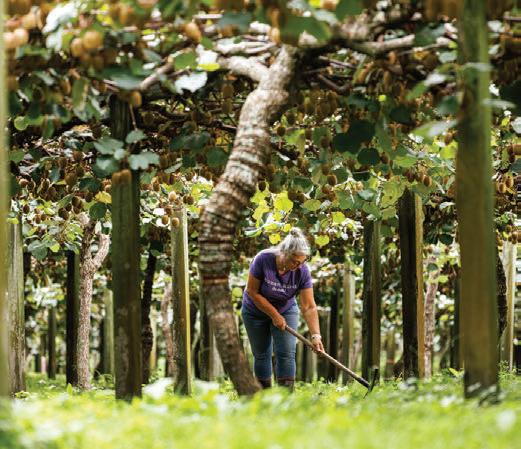

and
has returned’. It’s beautiful and all we need is for each
it on their
to
Page 17AVOCADOS
fantails than
we
moved here.
me so happy because if we allow the land to regenerate and put in the right native
acres, we
few months
fronds
birdlife
person
do
own little patch.”
Newly elected BOP Regional Councillor Kat Macmillan is determined to lead by example as she advocates for more sustainable practices on rural properties.
Photos: John Borren.
Debbie Griffiths
THINGSDON'TSEEM SOIMPOSSIBLE... WHENYOUKNOWAN EXPERTSGOTYOURBACK AAL is a large scale independent operator oforchard management, growing, harvesting and packing. We supply a full range of services andequipment as well as a reliable, experienced team with exceptional customer service. AAL is equipped to handle the jobs you can't do...right throughto the jobs you just don't want to do. If you need advice or management of your orchard, find out more by contacting our team on 07 549 1809 or visit www.aaltd.co.nz AAU AONGATETE AVOCADOS LTD.
Planting pine to cut methane emissions

A report from the Parliamentary Commissioner for the Environment has found a very large number of pine trees would need to be planted to make a signi cant dent in farming emissions.


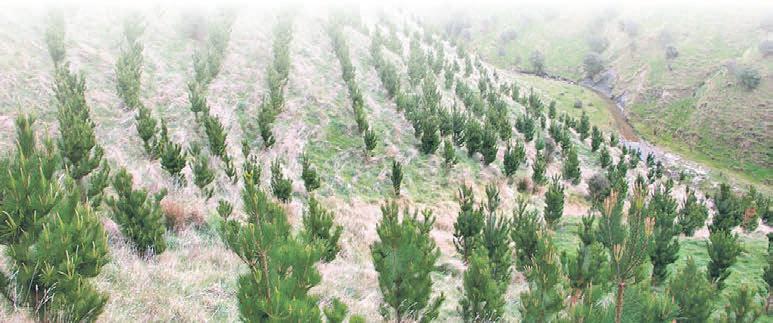
Simon Upton commissioned the paper from climate scientists Professor Dave Frame and Dr Nathanael Melia.
e report says 770,000 hectares of new pine would need to be planted by 2050 to achieve the temperature reduction that cutting methane emissions by 10 per cent would achieve.
at amounts to 8.5 per cent of the total land currently used for pastoral farming (nine million

hectares), or nearly half of what’s used now for forestry (1.7 million hectares).

e report said it showed forest o setting was no easy x for neutralising New Zealand’s livestock methane emissions.
“ is is certainly not a silver bullet,” says Upton.
“We can’t simply plant our way out of this problem, just as we can’t plant our way out of burning fossil fuels.
“But [it] can provide a part of the solution, that’s about as much as I think can be said.”
Using forestry to o set a fraction of the warming might be possible, he says.
Last resort

While the report has made no recommendations, it states that o setting with trees should be a last resort. Upton says the aim of the paper is to lay out what could be credibly claimed about o setting methane from livestock in the hope of fostering better informed debate.
He says it personally never made sense to him why agriculture was not allowed to buy forestry credits but other emitters of CO2 could.
New Zealand climate laws do not allow credits from tree planting to o set methane emissions.

Forests remove carbon dioxide, not methane, from the atmosphere.
Upton stresses the report in no way advocates planting trees instead of reducing methane emissions, and the priority is cutting the amount of emissions of all damaging gases going into the atmosphere.
e report says: “Given the need to make deep reductions in all emissions, o setting with trees should be a last resort that is used only when all practicable means of reducing emissions at source have been exhausted.

“If forestry is used to o set livestock methane, it should only be used in addition to - not instead of - gross emissions reductions.”
Impacts
Upton says he commissioned the report to learn how forestry o set could be used to go beyond New Zealand’s climate goal to cut agricultural methane by between 24 per cent and 47 per cent by 2050.

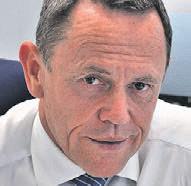
e report says planting on such a large scale could have bene ts but also adverse economic, social, cultural and environmental impacts, and if not done carefully there was a real risk the negative would outweigh
the positives.
Based on the metric used in the report, it says planting trees to o set biogenic methane did not lock land up permanently in forestry because if methane emissions were reduced over time the land could then be used for something else.
at’s because methane, while more damaging initially, is comparatively short lived compared to CO2.
Livestock methane accounts for about 55 per cent of New Zealand’s warming, with the amount being released plateauing in the past two decades.
e ‘Warming approach’ leads to more planting short term, but less in the long term.
e numbers
e report used a warming-based approach to crunch the numbers.
is metric is di erent from the one New Zealand uses to report its emissions internationally, and what is used domestically.


ere is disagreement among New Zealand climate scientists about the approach.
e report nds the warming approach requires more trees to be planted in the short term, but the conventional approach would require more trees to be planted overall in the long term (after 100 years).
Upton says the report stood on its own merits and was not about di erences in the choice of metric.
Page 18 FORESTRY
Hamish Cardwell / RNZ
Parliamentary commissioner for the environment Simon Upton.
Young radiata pine trees grow on a hillside near Tiraumea, north of Masterton. Photo: RNZ/Kate Newton.
Improving staff safety over


Research into sprain and strain injuries over calving has identi ed some simple ways farmers can reduce injuries on dairy farms.
e three-year DairyNZ project, funded in partnership with ACC’s Workplace Injury Prevention programme, is researching the causes of sprains and strains on dairy farms – and developing practical solutions to reduce injuries.

“Around 40 per cent of injuries on dairy farms are sprains and strains, with the highest risk from August to October. As calving progresses, fatigue can set in and increase injuries,” says DairyNZ senior scientist and research lead, Dr Callum Eastwood.
Survey
As part of the Reducing Sprains and Strains project, 370 farmers were surveyed on how they managed health and safety, and whether injuries had occurred.
“We know farm teams are working outdoors, in milking sheds, with animals and vehicles.

“ e nature of their work means there is a risk of injury, particularly in busy times. Farmers reported injuries from lifting calves or buckets, from uneven ground and getting o motorbikes. In the milking shed, slippery surfaces and tripping on hoses are hazards,” says Dr Eastwood.
Farmers surveyed used a range of strategies to avoid injury.

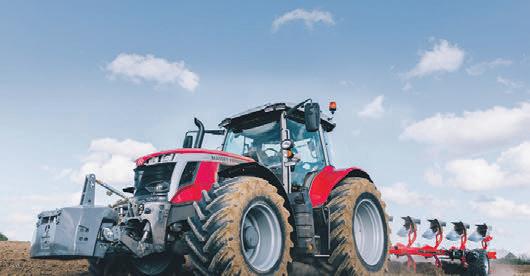


ese included sharing calf collection duties across the team, using a specialist trailer to transport calves, and piping milk into calf feeders rather than using buckets.
Other tips included tucking hoses away in the shed and using footwear with a greater grip.





Cambridge farmer Ashlea Kowalski and husband Andy contract milk 245 cows and is using many of the strategies farmers recommend.
“I work full-time and we don’t have any sta , so it’s really important we both stay well to keep the farm running,” she explains.


“By piping milk to calves we can avoid lifting buckets and we’re able to feed 160 calves within 15 minutes. It’s a really e cient way of feeding. Our calf trailer is also a good height for us, and we have trolly jacks on our calfeteria to avoid heavy lifting.” e couple have the milking area well-lit and
keep hoses out of the way when not in use.
“It’s a good idea for farmers to get together with their farm team and assess what the risks are from calving and how to reduce these next season. Many safety strategies farmers can adopt are low cost, are easily adopted and are good for business as well,” says Dr Eastwood.
ACC workplace safety manager Virginia Burton-Konia says farmers believe many injuries are avoidable.
“On average, the survey showed people who were injured needed 12 days o work, but took around 27 days to fully recover.
“With farms often short-sta ed, new ideas to avoid injuries and make the job easier will ensure everyone can help out at the busiest time of year.”

Reducing injuries

e next stage of the project involves developing prototype options farmers can use to reduce injuries.



A calf pick-up trailer designed to reduce back strain is being developed for farmer feedback.
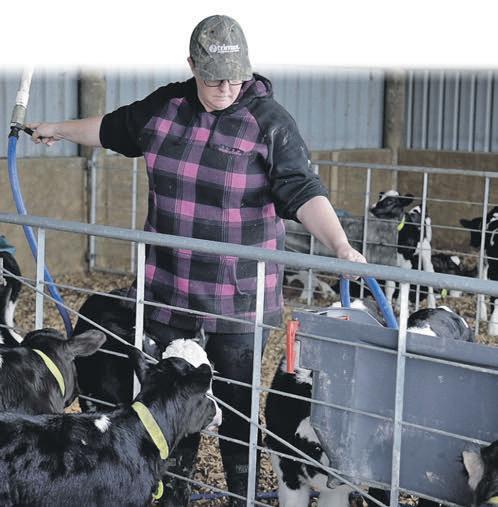
e project is part of work underway through a dairy sector strategy called Great Futures in Dairying to attract, retain and grow the dairy farm workforce over the next decade by developing great jobs, great people and great workplaces.
To nd out more about the Reducing Sprains and Strains project, and view videos with tips on reducing injuries, see: www.dairynz.co.nz/calving-safety

Page 19
Piping milk to calves is one of the strategies dairy farmer Ashlea Kowalski is using to reduce the risk of injury on-farm.
MF 7S 140 - 210hpNew pre-- order yours now WWW.PIAKO.CO.NZ ROTORUA - 07 345 8560 I MATAMATA - 07 888 6292
After dairy farming for many years in Reporoa, the Bell family discovered that fresh lucerne had really good nutritional value for ruminant animals.

Upon seeing the gains in milk production in their own herd, they took the plunge and started to grow and pack fresh lucerne.
Initially known as e Hage Company, it was launched as


Fiber Fresh in 1984.
e company came under new ownership in 2019, owned equally by Caniwi, Dunstan and Let’s Bale. e business now has 45 sta worldwide, and farms 2000 hectares, harvesting and packing their own product on site.
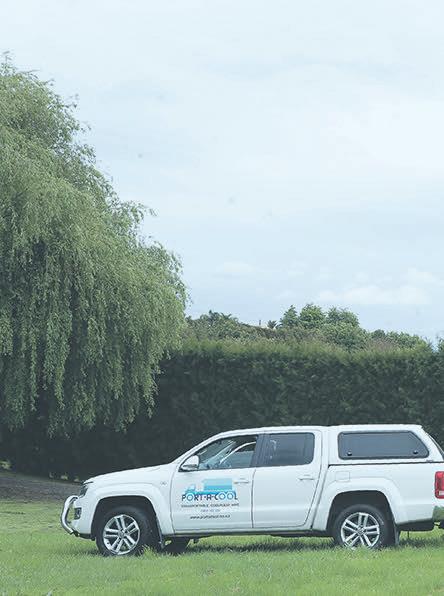



Farm manager Murray Jansen has been farming in the Reporoa basin for more than 30 years.
He knows the volcanic pumice soils well, along with
the weather patterns and expected outcomes from rain and drought.
He’s in his 12th year growing lucerne for the company.
Lucerne is grown in an eight year cycle, with an expected six years of production, followed by a rest period for the land of 18 months, when it is sprayed out and tabu grass is planted there.
“Spring is full on busy for us as we replant any new lucerne stands, plant 60 hectares of oats and tabu grass where required. Our rst cut of the lucerne is in October and we do six cuts between then and May.
“We aim for 15 tonnes dry matter/ hectare for the lucerne from the 1450 hectares planted with it.”
It’s a knowledge game, as lucerne needs cutting at just the right moment as plants can be damaged if cut too soon. It’s a sensitive plant that
Above: Inside the factory.
has a deep tap root, and needs good sunlight and good rain.
Murray is very proud to have accumulated a large eet of agricultural machinery and all work is carried out in-house.
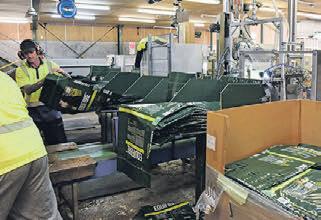
He is particularly delighted with a new Reiter harvester, which is the only one in the Southern Hemisphere.
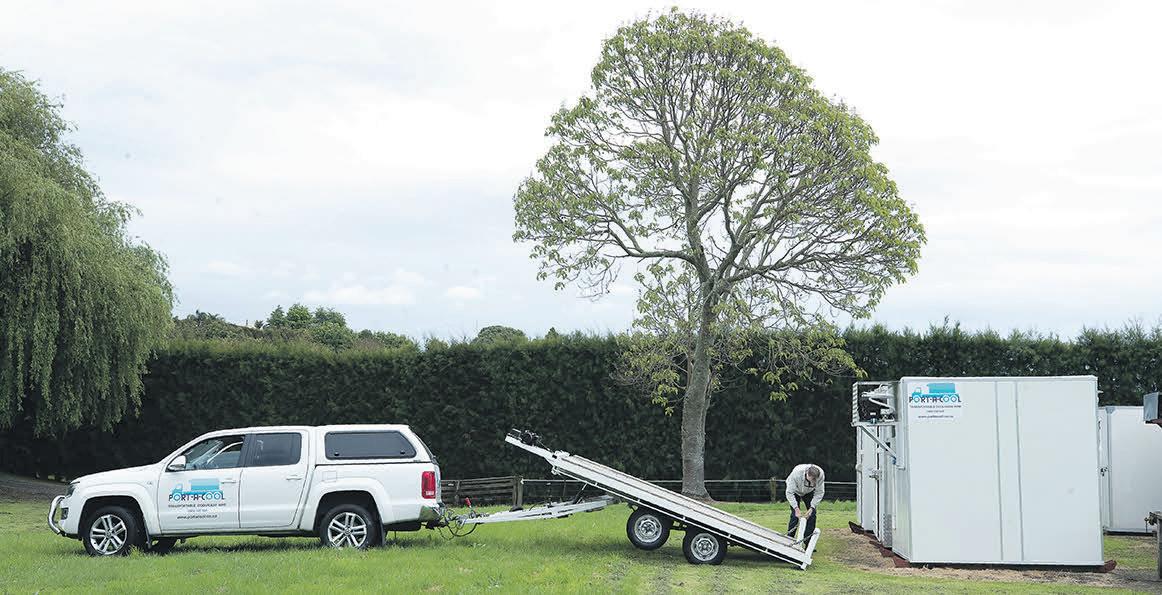
He describes it as a game changer for raking the cut lucerne.
e company has been developing and extending horse products after research proved that horses need to graze and forage continually to remain healthy.
Chewing of feed is essential as this releases saliva to line their gut which assists in avoiding stomach ulcers and other digestive problems.
Problems with sharp teeth and stomach ulcers can be avoided by feeding fresh bre. ...continued
Page 20
Technical manager Robyn Hirst.
Below: Production manager Vaughn Snowling, marketing manager Shannon Galloway and quality assistant supervisor Jemma Mullinder.
Photo: Catherine Fry.
Photo: Catherine Fry.
Dairy pasture is high in endophyte, starch and sugars which is suitable for dairy cattle but not for horses, increasing the likelihood of conditions like staggers and laminitis.

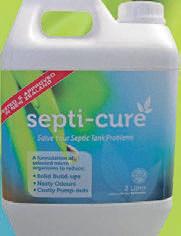





“Horses shouldn’t stand around and eat dried grain food. ey are simple animals that need to graze and chew for the majority of the day.
“ ey thrive on a diet with bre, good proteins, low sugar and low starch,” says technical manager Robyn Hirst.

“Cut lucerne that is packed freshly cut holds the nutrients which are stripped if the product is dried. We are doing something unique and working closely with our clients.
“It’s a live product that needs to be sealed to keep in the freshness and nutrients, but also allowed to breathe. A lot of time and e ort has been put into developing our packaging, and we plan to become 100 per cent recyclable in the near future.”

Production manager Vaughn Snowling oversees 15 sta in the factory, ensuring the raw material is processed correctly. He is in charge of stock control and all inward and outward goods.
An electrical engineer by trade, he has proven to be very useful indeed with his innate ability to x all kinds of machinery.






Fiber Fresh is Agricultural Compounds and Veterinary Medicine registered for domestic use and exporting and the focus is always on quality control.
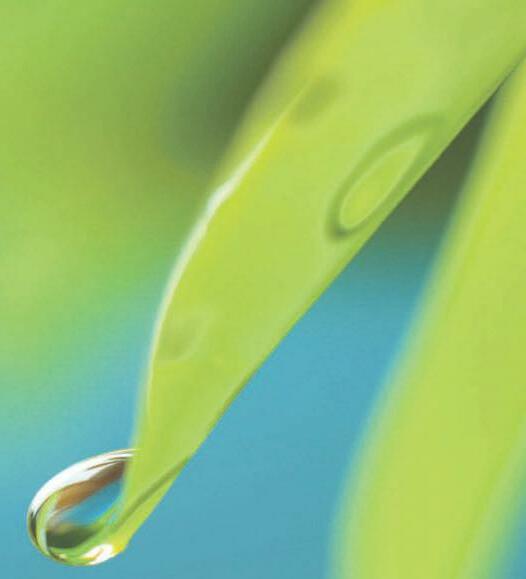
Quality assistant supervisor Jemma Mullinder ensures all procedures are followed.
As an MPI approved facility, in-house MPI inspections can be carried out by her.



Every batch is checked visually and then tested by Hills Laboratory before it is released to the market.
“Valve and seal checks are carried out every 30 minutes in the factory, and I double check that.
“Everything is checked and checked again.
“We do so much checking to keep the product quality high,” says Jemma.
A proportion of the lucerne is sold domestically

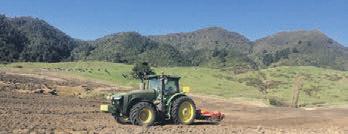
through retail outlets, as well as a cut and carry product locally, but 50 per cent is shipped overseas.
Covid had a huge e ect on exporting as shipping ground to a halt but the company spent two years repositioning and establishing new markets overseas.

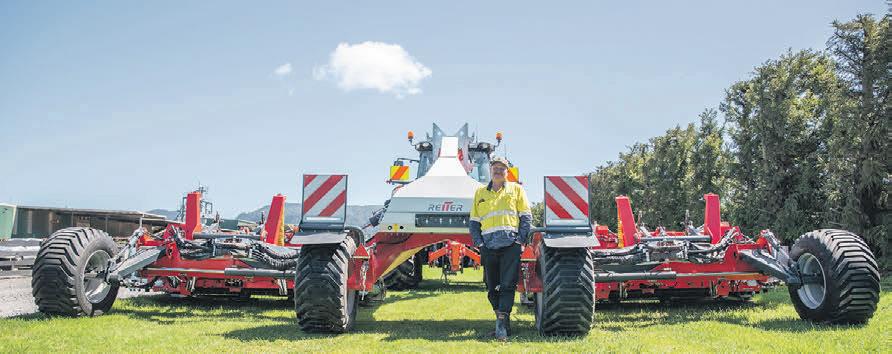
“Our products are popular in China, Japan, Korea, New











Caledonia, and Australia. We’re really pleased to have entered the German market and we have a sta member based there. e products have recently earned the New Zealand Trade and Enterprise mark, so it’s a really exciting time to be part of the Fiber Fresh story,” says marketing manager Shannon Galloway.

Page 21
continued...
Marketing manager Shannon Galloway in the storage yard. Photo: Catherine Fry.
Farm manager Murray Jansen with his Reiter Harvester. Photo: Catherine Fry.
0800 109 202 www.ecoworld.co.nz Breakthrough Product Developed for your Septic Tank Also Available at: Before* After* Septi-CureTM is: Cost Effective Easy To use Improves Soakage Reduces Solids and Scums Eliminates Nasty Odours Reduces Costly Pump-outs Like us on Facebook A satisfied customer in Hamilton has been using Septi Cure for over five years. He says this allows them to have an odour free septic tank with low maintenance costs. He also says that his service person is amazed at how well Septi-Cure works, keeping their tank in very good condition. *Results may vary
Where is the Chondroitin? (Part 2)
Last edition I asked why most NZ made osteoarthritis support supplements have little or no chondroitin sulphate.

e research in favour of CS is overwhelming. So much so, that CS





is listed as a prescription medicine by the European Medical Agency. e daily dosage recommendation is 800mg which is the dosage I use in my joint supplement where I combine CS with 800mg of Glucosamine and 100mg of Curcumin extract (from turmeric).

Some experts suggest CS has more than 30 positive e ects on joints. ese are changes that create cartilage (anabolic) and those that prevent the destruction of cartilage (anticatabolic).



Cells called chondrocytes are responsible for repairing, maintaining, and secreting cartilage. ey produce CS as it is an important part of both joint capsule uid (synovial uid) and actual cartilage. CS is critical as it helps chondrocytes to repair damaged cartilage. If these cells are damaged or die, the cartilage they maintain will eventually disintegrate. e second role of CS is preventing the loss of chondrocytes from damage by destructive enzymes and free radicals. is is all great in theory but what
are the impacts of adding therapeutic doses of CS in someone with advanced osteoarthritis?
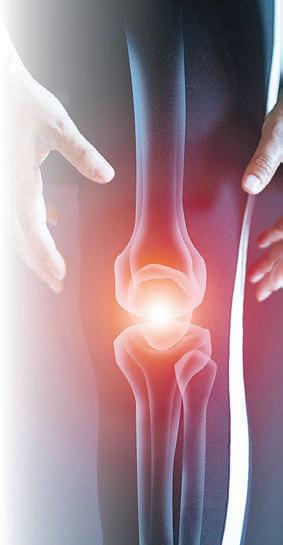
Earlier this year I was contacted by someone in her mid-70s with severe OA in one knee and moderately severe in the other.

is a ected her mobility and was unable to walk for any distance. I started her on my standard OA programme based on an intensive dose of my joint supplement and Omega 3 sh oil to reduce in ammation.
After two months she noticed her knees were more comfortable. Now after six months the pain has signi cantly reduced, and she can now walk freely.
John Arts (B.Soc.Sci, Dip Tch, Adv. Dip.Nut.Med) is a nutritional medicine practitioner and founder of Abundant Health Ltd. For questions or advice contact John on 0800 423559 or email john@abundant.co.nz Join his newsletter at www.abundant.co.nz


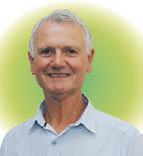
Health warnings listed for Lake Rotorua
e health warnings for Lake Rotorua, Ohau Channel (the channel that links Lake Rotorua and Lake Rotoiti) and the Okere Arm of Lake Rotoiti have now been lifted by the BOP Medical O cer of Health.





Visual observations and satellite imagery provided by the Bay of Plenty Regional Council con rm that algal blooms in these areas have subsided.
Despite the lifting of the warning, the public should always be cautious for signs of algal blooms if using lakes.
“Algal blooms can develop rapidly and unpredictably and can sometimes produce toxins that are harmful for people as well as animals. If the water looks discoloured, has an unusual smell, or has green or brown particles suspended in it then it is best to avoid contact with it,” says oi Te Ora Public Health medical o cer of health Dr Phil Shoemack.
Contact with water a ected by blooms of blue-





















green algae can cause asthma and hayfever attacks in some individuals.
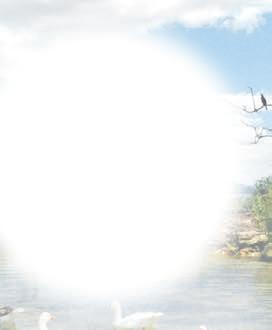

Contact with the blue-green algae can also cause skin rashes, stomach upsets, and in some cases neurological e ects such as tingling around the mouth, headaches, breathing di culties and visual problems.
“It is important to look before you leap. If in doubt, it is best to avoid contact with the water and swim or play somewhere else,” says Dr Shoemack.

Dogs are particularly at risk and should be kept away from the shorelines if algal blooms are spotted.
Elsewhere in New Zealand there have been reported deaths of dogs that have eaten algae.

Up-to-date information on health warnings for the Bay of Plenty and Lakes districts is available through these channels: Phone: 0800 221 555 Website: toiteora.govt.nz Facebook: facebook.com/toiteora Twitter: twitter.com/toiteora Instagram: instagram.com/toiteora Email alerts for subscribers: toiteora.govt.nz/news

Page 22
Abundant Health FIRST HOUR FREE
Carbon-sucking planted in BOP
from between $5000 to $12,000 per hectare. We hope to replicate these strong survival rates in this trial.”
Tom says both animal and weed pest control is essential to successful long-term native establishment.



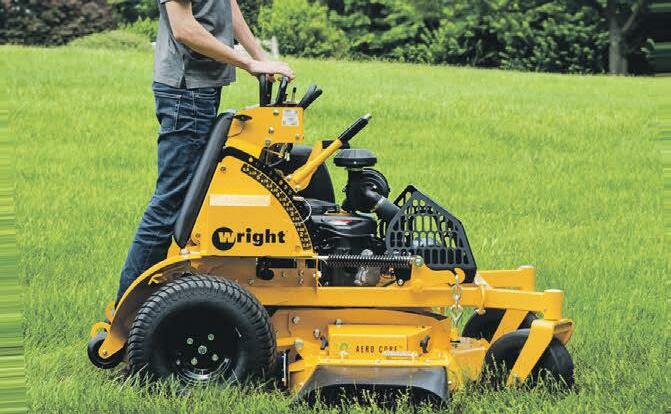
Pest control
“Diligent pest plant control from weeds like blackberry, Japanese honeysuckle, kikuyu grass, Taiwanese cherry, climbing asparagus and tradescantia, both before and after planting, is critical to success irrespective of whether forestry-grade or larger plants are used.
landowners and Wai Kōkopu (funded by BayTrust and TECT).
Local famer John Burke and his son, James, were eager to take part in Wai Kōkopu’s latest project and retired 2.64ha of riparian land by planting 6600 native seedlings.
John is con dent the forestry-grade seedlings will establish well over time.
A mammoth native planting e ort has taken place in one of the Bay of Plenty’s most polluted catchments to retire marginal grazing land and help protect sensitive waterways.

A total of 28ha of native forest has just been planted across nine di erent farms within the Waihi catchment, which runs from the mountains near Lake Rotoiti and Rotoehu to the coastal estuary at Pukehina.
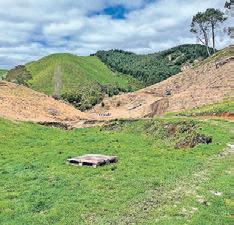

e planting took place on properties that have Environmental Programme Agreements with Bay of Plenty Regional Council and was co-funded and coordinated by Wai Kōkopu.
Native planting trial
e project is also doubling as a large-scale trial of forestry-grade native planting in the catchment which may substantially reduce the cost for farmers to retire marginal or unpro table grazing land.
Wai Kōkopu restoration manager Tom Anderson says Waihi Estuary was once a main food bowl for the Bay of Plenty but is now considered one of the most polluted in New Zealand. “Shell sh gathering was regularly undertaken but is now generally unsafe because of the state of the estuary.
“ e rivers feeding the estuary are also not safe to swim in. Overall, because of high levels of nitrogen, phosphorus and E. coli, the estuary’s entire ecosystem has been compromised with many native plants, sh and birdlife struggling to survive.”

Wai Kōkopu’s restoration team has planted 62,750 forestry-grade native plants across erosion-prone gully heads, steep hillsides and wetlands in recent weeks.

Forestry-grade seedlings are similar to pine seedlings. ey have substantially less soil around their roots (150ml compared to 1.5L for conventional native plantings), making them cheaper and more e cient to plant.
“By applying large-scale forestry techniques















to native planting, we are aiming to lower the cost of native establishment, helping landowners’ and funders’ dollars go further.
“Other successful projects around the country using this method have shown that forestry-grade native plants can more than halve the cost of conventional native establishment

“Pest animal control was carried out prior to planting, targeting wallabies, deer and hares. ese plants will be regularly checked for evidence of browsing, and further night shooting will be carried out if required.”
e forestry-grade native seedlings cost less than $2.20 for each plant and planting, whereas larger grade plants cost up to $6 to grow and plant in the ground.
At 2500 stems per ha, Tom says that is a cost di erence of $5500 per ha compared to $15,000 per ha.
Bay of Plenty Regional Council paid for approximately half the cost, with remaining funds coming from








Page 23
Planting underway.
An
aerial view of the planting work.
DON’T MISS A THING Quality, affordable hearing aids from your local hearing clinic. 0800 HEAR ME www.hearme.co.nz Clinics in Hamilton, Cambridge, Matamata, Morrinsville and Auckland 0800 432 763
Colin Amrein CONTRACTING
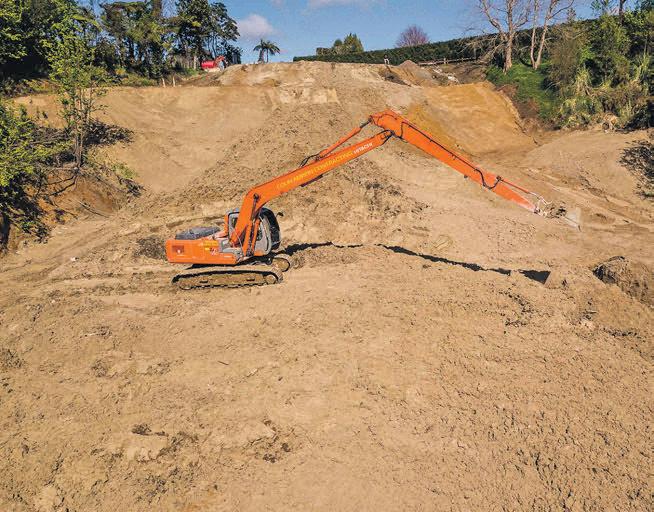



Ltd
Page 24 COAST & COUNTRY NEWS
1.0 tonne less lime will be necessary to maintain optimum soil pH. e cost of the annual application can be further o set by reducing the amount of magnesium in water supplies. All animals perform best when their drinking water is clean and fresh.

e addition of magnesium sulphate and chloride makes water unpalatable resulting in animals drinking from puddles largely
negating the intended e ect. A single annual application of Golden Bay dolomite is a stress reliever for operators and a production enhancer for animals.


As the late Prof Walker of Lincoln University wrote: “….individual farmers will have to make their own calculations, but in my view dolomite is the ideal material to use on acid soils low in magnesium…”
Some years back, there was a government backed campaign to buy locally made merchandise.
How e ective it was is unknown, however, there was no way I was going to part with my hard-earned dollars for a New Zealand product unless it was as good as and price competitive with an imported one.

Since then, the world has embraced globalisation and the price of products imported from countries with lower labour costs has largely dealt to products from our traditional suppliers.
When price becomes the sole, or main, determinant of purchasing decisions quality deteriorates and value, what we get for our dollar, becomes increasingly di cult to ascertain.
Farmers’ message

As the pressure for immediate grati cation has strengthened, successful farming, always a longterm venture, has su ered as the industry has embraced short-term band aids for systems that have become increasingly wobbly.

With fewer multi-generational farming operations some really useful stu is in danger of being lost.

Which doesn’t mean everything of yesteryear was better than that of today, that’s simply not the case.
Animal health remedies often dismissed as old wives tales nearly always contain an element of truth, and one piece of advice I received was that Golden Bay dolomite applied annually was a must do.
No more cows down behind hedges at ve in the morning was the message given then and the feedback from farmers now.
ere is only one dolomite mine in the country and that is at Golden Bay, which means transport to property is a factor, however it’s a lot less than cartage from the other side of the world which is hidden in the price paid for magnesium oxide.

Continuity of supply is also guaranteed, which is not the case for imported products. e timing of application is relatively unimportant.
Provided dolomite is applied at 12-month
intervals the lift in plant magnesium levels remains constant.
Another reason for it being the most e ective magnesium fertiliser is the fact that it also contains calcium.

Magnesium related metabolic disorders are seldom due to just a lack of magnesium, it’s the balance between the two that is critical.
Prior to calving animals require extra magnesium to help release calcium from the frame, post calving extra calcium is required to meet lactation demands and dolomite delivers both.
Animals’ choice
Long-term dolomite users will sometimes also make a bin of dolomite available along with one of lime our and allow animals to choose.
It’s a highly e ective way of ensuring optimum calcium and magnesium levels throughout the year, and it doesn’t much matter if they get wet.
And the upside doesn’t stop there.
Dolomite is an excellent soil conditioner in its own right and applied at the standard 200 - 250kg/ha rate to soils damaged during winter it helps with recovery.

Soil is ideally 25 per cent air and 25 per cent moisture, and the conditioning e ect of dolomite helps achieve that status.
It also has a pH or liming e ect similar to high quality aglime.
Four years of applying dolomite at 250kg/ha, the highest rate required for pasture, means

Page 25DAIRY
For more information call Peter on 0800 436 566
Dolomite: A blast from the past Contented
dairy cows.
WATER BORES P. 09 267 9100 M. 021 842 475 E. info@drillforce.co.nz www.drillforce.co.nz Domestic to Irrigation Water Bores Free Pump Consultation with Local Agents Wa ter Diving Service Available All Workmanship & Materials Guaranteed Free On-site No Obligation Quote WATER BORES P. 09 M. 021 E. info@drillforce.co.nz www.drillforce.co.nz Domestic to Irrigation Water Fr ee Pump Consultation with Wa ter Diving Service Available All Workmanship & Materials Fr ee On-site No Obligation WATER P. 09 267 9100 M. 021 842 475 E. info@drillforce.co.nz www.drillforce.co.nz Domestic to Irrigation Water Bores Free Pump Consultation with Local Agents Wa ter Diving Service Available All Workmanship & Materials Guaranteed Free On-site No Obligation Quote WATER BORES WATER BORES
Sting in policy for rural subdivision

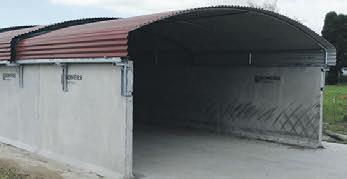
In recent weeks, the Government has released the National Policy Statement for Highly Productive Land.
is is about ensuring the availability of New Zealand’s most favourable soils for food and bre production, now and for future generations.


e policy instructs local councils on how to manage the subdivision and land use of this highly productive land resource. Having witnessed the apparent sprawling of our cities onto productive land, I see it as an admirable policy.
Whether this policy will halt that speci c development is highly questionable.
e policy will not necessarily limit this sprawl.
It simply requires that, in rezoning land, councils must look at alternatives, such as allowing higher-density residential development within its existing urban boundary or rezoning land that has a lower productive capacity than any other land that may be considered. Practically cities will continue to sprawl, I believe.
With subdivision on general rural land, apart from the usual exclusions for defence facilities and Māori land subdivision, councils must avoid, if possible, the cumulative loss of productive land as well as any reverse sensitivity e ects on land-based activities.

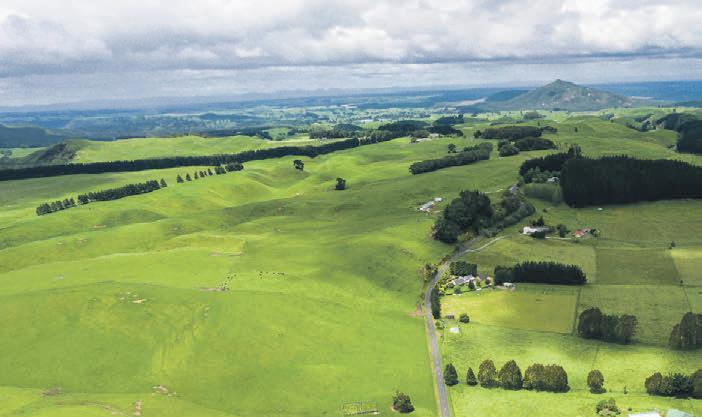
is would include potential complaints from residential people su ering from things such as noise and odours in the countryside.




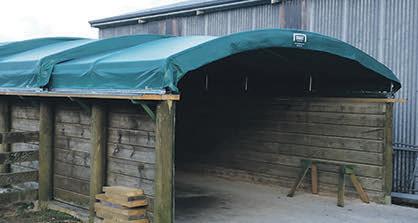


ere are many di erent classes of land across New Zealand that are determined based on fertility, contour, drainage and climate.
Classes 1 to 4 are considered suitable for multiple land uses including cropping, while classes 5 to 7 are only suitable for pastoral grazing and forestry.

Class 8 is not suitable for any productive use.
e NPS HPL deals speci cally with Class 1 to Class 3 soils but will catch others.
As a result of this new legislation regional and local councils are required to take a strategic and long-term view in managing the e ect of subdivision.








ey are required to map land that is of Class 1 to 3 as highly productive land.










And they are allowed to map
boundaries of large and geographically cohesive areas.
Herein lies the sting –small, discrete areas of lower-class soils that lie within this cohesive area may be included with the highly productive land. So, local councils may outlaw subdivisions on some areas of low-quality soils as a result of this policy.

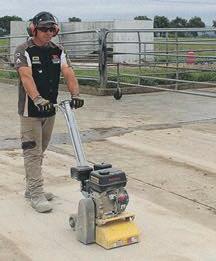

is is yet another reason to not delay subdivision if it is on your radar over the coming years.
is is just another layer of red tape that, if it doesn’t make it impossible, will make it much more di cult and costly. ere is no better time than now to get your plans underway, so talk to a specialist subdivision company and start the ball rolling, as it can take many months to gain approval from council.

If you are contemplating subdividing your land, please feel free to give us a call to discuss how this evolving situation might a ect your plans.

Page 26 DAIRY
RETRACTING SYSTEMS fertiliser dry for easy access cladding options cut waste info@slidingroofs.co.nz www.slidingroofs.co.nz stop cows falling save money Before After Before After
Learn to look after yourself
A big focus for dairy farm teams is keeping cows in great condition. But to take good care of their cows, farmers also need to stay in top form themselves.
To mark Mental Health Awareness week, dairy farmer Kane Brisco joined a recent DairyNZ podcast to share some timely advice on how farmers could take care of themselves.

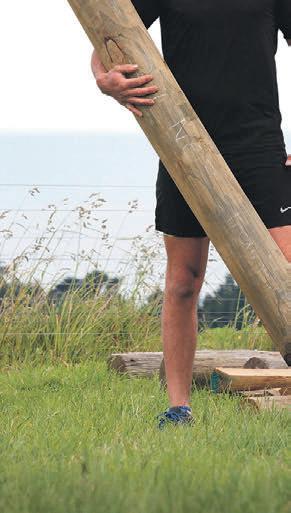
Kane says he went through some challenging times as a sharemilker but he turned things around and rekindled his passion for farming, and life, by making some simple changes to his lifestyle and approach to dealing with stress.

“It got to a point where I couldn’t see a light at the end of the tunnel. I lost my passion for farming, and got close to walking away from it.”


DairyNZ general manager farm performance Sarah Speight says Kane’s advice is particularly timely for dairy farm teams, as they’ve just come through the busiest period of the farming year – calving.
“Taking time out is particularly important for both farm owners and sta in the short gap between nishing calving and the start of mating,” says Sarah.
“Finding out what your sta want to achieve – both personally and professionally – and considering how you can support them is also key to making your sta feel happy and valued.





“For example, if they love sport can you support them by adjusting your roster so they can attend practice and games.”
Kane’s tips to improve your condition score:
Get t





Kane rebuilt his love for farming by starting boxing. Today, he has an on-farm gym and uses farm equipment like tractor tyres and fence posts as part of his tness routine.

Staying t helps him cope with the physical and mental challenges he faces day-to-day.
“Whether its cross t, running or pilates, you’ll nd your passion,” he says.


Eat well
Farmers know that ensuring your cows are getting the right nutrition is crucial to achieving good body condition, and being highly productive.




e same goes for you too!
Kane says eating well was the next key step he took after getting t to help him stay well.
Take time out
“Time out with family to do things you enjoy, and getting o the farm, is really important to relax,” says Kane.
“Balancing commitments to the farm, family and yourself isn’t easy, and you have to keep working at it.”
Reframe how you see challenges


Kane says how we react and deal with challenges has a big impact on stress levels.
“Instead of getting angry when something doesn’t go the way I want it to, I think about what I want to achieve longer-term and then can break down how I want to get there. at means you switch from thinking negatively to problem solving and developing constructive ideas.”
It’s ok to say you’re not ok

Kane encourages farm owners and managers to be open about the pressures they feel.

“Sharing how you’re feeling encourages other people in the farm team to speak up when they’re feeling stressed. at helps everyone better address issues when they come up.”
For more tips on staying well, and to listen to Kane’s podcast, visit www.dairynz.co.nz/wellbeing
Page 27DAIRY
Dairy farmer Kane Brisco.
GRUNDFOS ®
Every day realities of climate change
He Waka Eke Noa would have you believe farmers are not aware of climate change – when in actual fact we live with the realities of it every day on our farms.
e unpredictability of the weather has a real impact on every aspect of agriculture. On our farm, for example, we had more rain in the rst three days of October than we had in the entire month of September.
Year to date, we have had 2535mm at the farm in comparison to 2147mm last year and 1557.5mm at the yard in comparison to 1029mm for the same period last year
Combined with the mass of water, when we get rain, the soil temperature is so low we are simply not getting the grass growth we need to maintain production.


A positive change

Fortunately there was a positive change last week with only 10mm of rain at the yard and an average soil temperature of 16.1°C (it was 14.4°C the week before). e same week last year was a bit cool with an average of 13.8°C which was out of sorts as the weeks before and after were 15.2°C and 15.9°C respectively.
We should be in the middle of a spring ush right now. Having nished calving, dairy farmers should be nearing peak production with cows on a rising plain of nutrition and liveweight in readiness for mating. But the reality is that unpredictable rainfall combined with low soil temperatures, means peak hasn’t been achieved anywhere around the country and at best we may not achieve it until well into November. And more and more farmers are putting young stock, in particular, onto OAD.
Pushing back these fundamentals in NZ’s farming calendar has real consequences for every agricultural sector.

Kiwifruit and avocado growers would, for example, normally be in the middle of budding and owering but recent frosts have severely impacted this with the kiwifruit industry predicting a drop of 30 million trays.
at decrease will hit the pockets of every Kiwi – there will be less fruit around for domestic, let alone, international consumption.
Bringing cows forward for mating in light condition isn’t an option any farmer wants to contemplate but, right now, many are facing that inevitability knowing it could a ect conception and potentially throw out next year’s calving pattern.
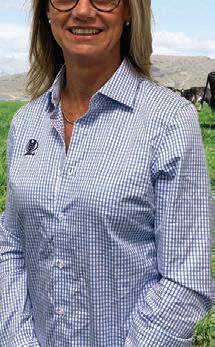


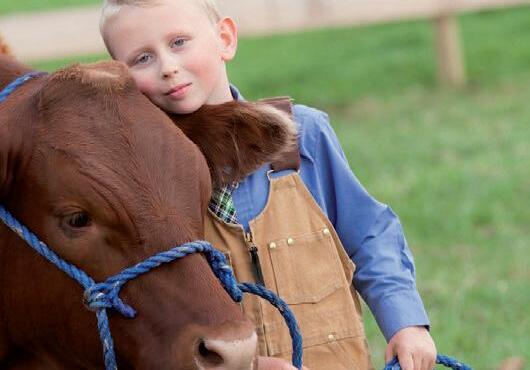



We are getting more and more calls from farmers around the country wanting to buy silage and bulk grass. After depleting local supplies, we started carting from as far away as Hawke’s Bay but with transport costs so high, it came at a price.


Uptake of maize silage has been quite high this year with many farmers forced to spend more than they had budgeted to maintain production and/or liveweight.


On a positive note, the weather forecasting I have done suggests the country will be warmer and wetter in late November and early December than last year.




Let’s hope that plays out because even though the season has been pushed out, if it can be extended at the other end there is some hope of achieving production targets and maybe some surplus for silage. Here’s hoping!

Managing an uncertain environment means farmers’ focus is more than usually on the job at hand – which is maintaining the health of their animals and the production of their farms so they can continue to generate the food this country and for export as we are known for.
Fundamental of farming



e ability to generate food for increasing global demand is at odds with He Waka Eke Noa –which could see 20 per cent of this country’s sheep farmers leave the industry.
at is a loss the country, nor the world, can contemplate - let alone a ord.


e document appears to ignore the fundamental of farming – that we are stewards of the land for future generations. Kiwi farmers are among the most e cient and e ective in the world at doing this. Walk onto any farm and you will see waterways fenced o , riparian plantings, strategic plantings of trees and revegetation of waste or unproductive land.
at does not appear to be recognised in this document which states that strategic plantings of native trees will not be recognised in favour of large plantings of pine.
And that brings me back to where I started.

Farmers understand the reality of farming better than most, because we live it, every day.


e weather change last week allowed us to get some silage bales wrapped… nally!


We also have a little maize left in next season’s allocation, feel free to get in touch with the team to discuss your needs and get a quote.

Page 28 FEED MANAGEMENT
Contact Jane to find out more about our range of molasses, commodities, calf & supplements: 027 220 7768 or 0800 300 313
Jane
Butterworth Territory Manager for BOP/Reporoa At GrainCorp we understand that every farm is different, and each herd has different requirements. Our team specialises in assessing each farm situation, and utilising our range of products to recommend the right feed solution.
Jane Butterworth
BOP / Reporoa ECO SILAGE COVERS • Highly resistant to damage and tearing •Labour and time saving – minimal tyres required • Reusable: guaranteed for 10 years, GeoSmart EPDM greatly reduces the production of plastic waste. • Quick installation •Easy to repair • Environmentally f riendly • Superior airtightness • Self-extinguishing Contact us for more information 0800 109 093 or 021 280 7266 Authorised importer and distributor of Firestone Building Products Email: vaughan@cosio.co.nz www.cosio.co.nz AUTHORIZED DISTRIBUTOR LK0113201©
Winter grazing regime deadline looming


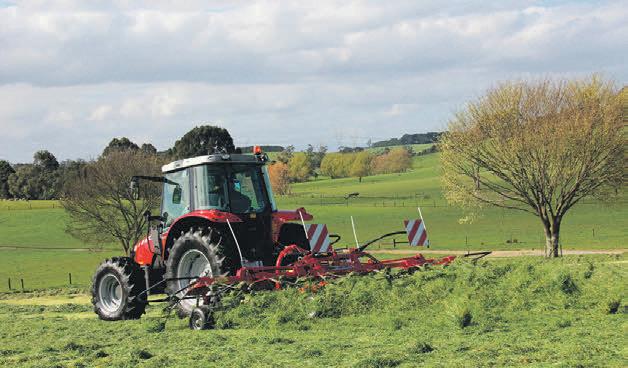
e Government’s winter grazing regime is becoming increasingly confusing for farmers as D-Day looms to have consents in place, warns Beef + Lamb New Zealand, Federated Farmers and DairyNZ. e farming organisation say the government has been slow to implement freshwater farm plans, forcing farmers into an expensive consent process, while councils nationwide are struggling with the consenting burden.
is has left farmers at risk of breaking the law as planting for winter crops needs to take place in late spring, says Federated Farmers water and environment national board spokesperson Colin Hurst.
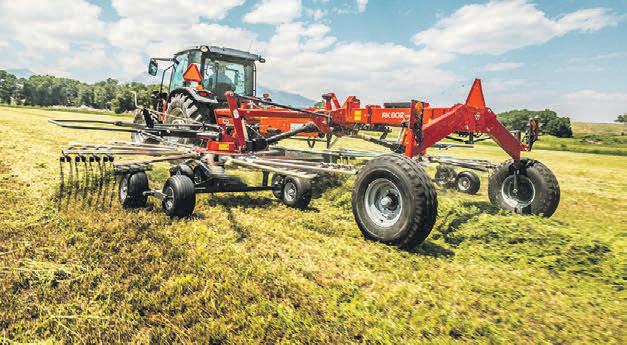
“We’ve been told by the Ministry for the Environment, Ministry for Primary Industries and various regional councils that ‘it’s ok’ and nothing will happen if farmers get planting, even though they’d be at risk of breaking the law.”
Resource consent
Colin says Federated Farmers, B+LNZ and DairyNZ anticipated this potential outcome and even warned the government.
“ e government hasn’t delivered a farm plan pathway as promised and they can’t even tell us when it will be ready,” he says.
“Regional councils are trying, but they are overworked, just like farmers. It’s been estimated that up to 10,000 farmers will need to apply for a resource consent without delay, which will waste a lot of time and money.
A river running through a Waikato farm.
“Both councils and the government have recognised that farmers have improved winter grazing practice, but the government hasn’t delivered on its promise to develop a farm plan pathway.”
e current rules require farmers who carry out winter grazing – and don’t meet a range of permitted activity criteria – to either have a certi ed Freshwater Farm Plan or to apply for a resource consent from November 1.

However, with the development of Freshwater Farm Plans being delayed, thousands of farmers must now apply for a consent.
Federated Farmers, DairyNZ and B+LNZ wrote to Minister David Parker in August calling for winter grazing rules to be put on hold until November 2023, as the Government has not yet implemented crucial elements of the new framework.
ere has been no response, says a joint
statement from the organisation. A second letter was sent to Minister Parker on September 22, which also included Prime Minister Jacinda Ardern.
Colin says some councils are advising farmers not to apply for a resource consent, even if the law requires it.
“In the view of Federated Farmers, this is placing a lot of risk on farmers. If things go wrong on the farm and council action is taken, a farmer will be in a far worse position than if they had a resource consent.”
Delay calls

Environment Southland recently advised it will provide a third pathway for intensive winter grazing that only breaches the slope aspect of the regulations.
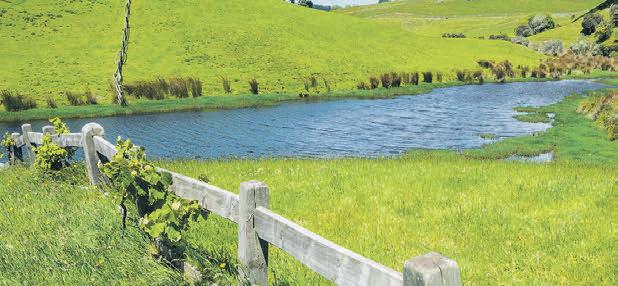
It will be through the Resource Management Act and is expected to cost farmers around $500.

“While we appreciate the e orts

Environment Southland has made to put forward a practical solution for their farmers, it does not solve the issues raised by the sector groups and adds to the confusion of the variety of approaches across the country,” says B+LNZ chief executive Sam McIvor.
“In our view farmers are being put in an impossible situation by the inability to get a timely consent, and the promised freshwater farm plan pathway.
“ is is why we are asking Minister Parker to delay the regulations and to allow for the development of a practical alternative until the freshwater farm plan pathway is fully available.
“In the meantime, if you are concerned about your own legal risk, we encourage you to seek individual advice, along with taking photos and records of what you are doing.”
DairyNZ chief executive Dr Tim Mackle says the situation is putting unnecessary pressure and confusion on farmers – and a solution is urgently required.
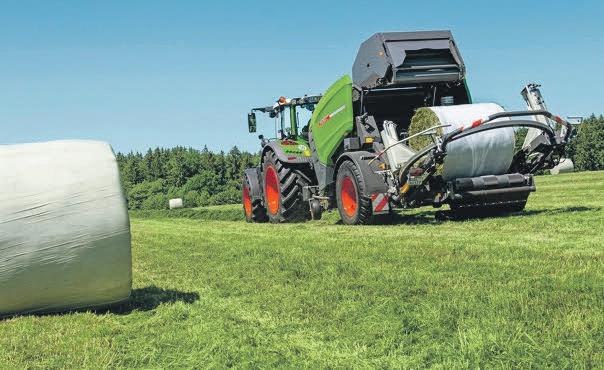
“We need the Government to deliver a freshwater farm plan framework so farmers can use it. In the meantime, Government needs to take a practical approach to these regulations and how farmers can proceed for next season.
“Most farmers are already implementing the good management practices required in the new legislation and farmers have come through a challenging winter very well.
“Regional councils are reporting that farmers have widely adopted best management practices and were well set-up for winter grazing this year.”

Page 29FEED MANAGEMENT
MORRINSVILLE 07 889 7055 Mike Kitching 021 735 665 Glenn Greay 021 862 169 Todd Hewitt 021 945 817 ROTORUA 07 345 8560 Mike Rogers 021 998 819 Jamie Gainsford 021 905 458 Tony Johnston 021 349 816 MATAMATA 07 888 6292 Bruce Lynn 027 292 6501 Paul Tuffey 027 292 6569 Kevin Morey 027 493 1620 MOW TED RAKE BALE FOR MORE INFORMATION VISIT WWW.PIAKOTRACTORS.CO.NZ Piako TractorsWith FINANCE FROM T&C’S APPLY 0%
A Bay of Plenty company has been sentenced for its role in sending a dense cloud of lime dust across a motorway, causing a multi-vehicle crash
Wealleans Bay of Plenty Limited was spreading the lime at a dairy farm next to the Tauranga Eastern Link Road on February 5, 2020, when the cloud drifted across the motorway on the wind – reducing visibility to

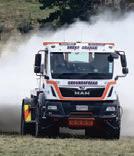



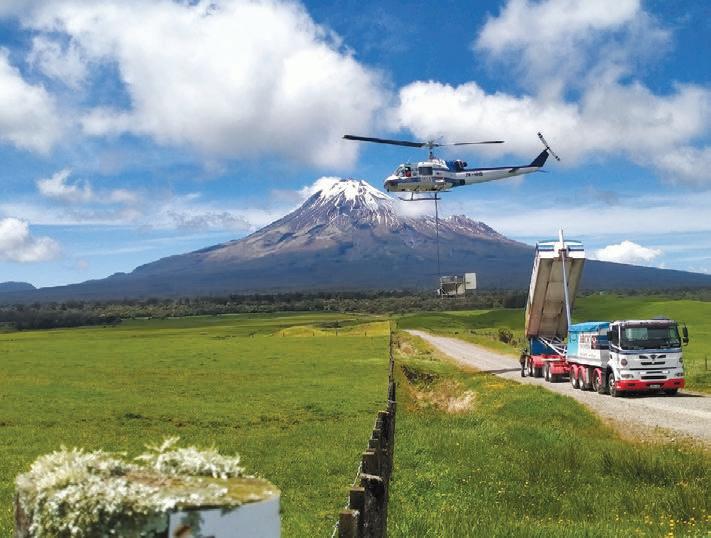
Susan Walmsley’s vehicle was engulfed and collided with a car in front, and was then struck from behind.
e 64-year-old never regained consciousness and died days later in hospital.
wife and mother, as well as a beloved teacher, and our thoughts are with all those who continue to mourn her loss. is was a preventable tragedy, and more should have been done to account for the risk to road users,” says WorkSafe area investigation manager Paul West.
Judge’s ruling
In June this year, Judge Paul Mabey QC found Wealleans guilty of health and safety failings, and the company was sentenced at Tauranga District Court on September 7.
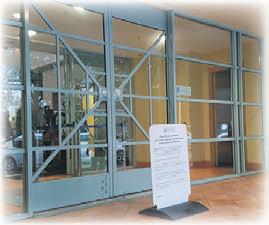
A ne of $360,000 was imposed, along with emotional harm reparations of $210,000 and consequential loss reparations of $88,649. Wealleans was charged under sections 36(2) and 48(1) and (2)(c) of the Health and Safety at Work Act 2015.
Being a PCBU having a duty to ensure, so far as is reasonably practicable, the health and safety of other persons is not put at risk from work carried out as part of the conduct of the business or undertaking, namely the spreading of ground lime fertiliser.

e maximum penalty is a ne not exceeding $1.5 million.
In his decision, Judge Mabey noted the fertiliser truck driver: “had no control over what the wind was doing to the product, but that is the point”.
e judgment went on to say the driver “was spreading in circumstances where the wind caused third party risk, was unaware of what was occurring before she stopped and when, nally, a decision to stop was made it was too late”.
Investigation
A WorkSafe investigation found Wealleans failed to undertake an appropriate risk assessment and did not implement a safe system of work for spreading fertiliser on the farm – exposing other people to serious injury and death.

“It’s only by luck that there were no further fatalities on the motorway that day.


“Although the circumstances are uniquely sad, this incident could have happened anywhere in the country so the agriculture sector should take notice,” says Paul.
Have your say on agricultural chemical labelling
e New Zealand Food Safety is inviting public comment on the proposed revision of the ACVM Guidance Document: Labelling Agricultural Chemicals.
is document sets out the generic and speci c expectations for label content of agricultural chemicals requiring registration under the ACVM Act.
is draft includes clari cations and more detail in a number of sections since the guidance was last updated in September 2020.
Authorisation of agricultural chemicals usually takes the form of product registration, and approval of label content related to the ACVM Act risk areas is part of that registration.
e Ministry for Primary Industries approves label content only as it relates to the ACVM Act to ensure compliance with the relevant registration condition (that is, Condition 61: “ e product must be labelled in accordance with
the product and manufacturing speci cations approved as part of this registration”).




e document history on page 1 has a summary of changes proposed in this version. Submissions close at 5pm on October 17, 2022.
What to include: e ministry would like answers on the following:
• Do you support or oppose any of the proposed updates included in the draft Guidance Document: Labelling Agricultural Chemicals? For each update you have commented on, let us know why you support or oppose.
• On balance, do you support or oppose the draft Guidance Document: Labelling Agricultural Chemicals itself?
Make sure you include in your submission:
• the title of the consultation document in the subject line of your email
• your name and title (if applicable)
• your organisation’s name (if applicable)




• your contact details (for example, phone number, address, and email)
• the answers to the questions posed.
Submissions can be emailed to: ACVM.Consultation@ mpi.govt.nz
Page 30 FERTILISER
Fertiliser “white-out”cautionary tale
e company was sentenced in Tauranga District Court on September 7, 2022.
Soil Testing Fertility Advice Fertiliser Recommendation Feed Quality Assessment Total Replacement Therapy E uent Management Remedial Advice & Action Slurry Bugs & Product Feed Management Plan Feed Balancing Pasture Management Feed Budgeting Ultimate Liquid Caustic Ultimate Acid DX50 Dairy Sanitiser DX50 Water Treatment GrassPond Cow Soil BioCircle Strong healthy biology is transferred from one area to another. This biology improves every area it enters. the Ron McLean: Managing Director | Kiwi Fertiliser M: +64 27 289 4258 T: 0800 549 433 E: ronmac@kiwifertiliser.co.nz www.kiwifertiliser.co.nz David Law: Director | Kiwi Fertiliser M: +64 27 490 9896 E: david@forwardfarming.co.nz www.totalreplacementtherapy.com Our mission is to respect biological life in all areas of the farm Soil Testing Fertility Advice Fertiliser Recommendation Feed Quality Assessment Total Replacement Therapy E uent Management Remedial Advice & Action Slurry Bugs & Product Feed Management Plan Feed Balancing Pasture Management Feed Budgeting Ultimate Liquid Caustic Ultimate Acid DX50 Dairy Sanitiser DX50 Water Treatment GrassPond Cow Soil Ron McLean: Managing Director | Kiwi Fertiliser M: +64 27 289 4258 T: 0800 549 433 E: ronmac@kiwifertiliser.co.nz www.kiwifertiliser.co.nz David Law: Director | Kiwi Fertiliser M: +64 27 490 9896 E: david@forwardfarming.co.nz www.totalreplacementtherapy.com Our mission is to respect biological life in all areas of the farm
Talking calcium use in New Zealand


hydroxide (alkaline), calcium nitrate (neutral) or calcium chloride (acidic).




e crop yields were the same independent of pH, for example, the results were superior to soybeans grown without calcium.

Calcium terms
Do not confuse the terms calcium, lime and pH. e primary objective of food production is to produce pro table nutrient dense food for human consumption.
Even with satisfactory pH, calcium


needs to be supplied for microbe and plant health. In the short term, improving calcium levels in the soil to 68 per cent of the base saturation on a PAL soil test, will result in better crop and animal health, quality, and production.



Medium term, the application of less fertiliser and nitrogen, can result. ink of calcium as an important fertiliser and not as something we periodically add to regulate soil pH which is a measurement of the soil hydrogen content.

In 1983, Massey University research suggested 1.8 million tonnes of lime were required on New Zealand soils each year.


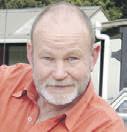
Just 1.3m tonnes are applied annually.














Lime tonnage has not increased much since 1981, while applications of other nutrients have increased markedly.
Between 1983 and 2007, the total nitrogen and phosphorus fertilisers applied went from 913,724 tonnes to 1,885,774 tonnes, doubling in 24 years.
In 2017, urea tonnage was 820,000 tonnes, doubling in a few years.
at is 345,000kg of nitrogen from urea alone.

is much nitrogen requires about 700,000 tonnes of lime and other minerals to counter the loss of calcium and micro/macronutrients, as nitrogen strips them from the soil.
at makes the total annual shortfall 700,000 tonnes of calcium or the equivalent of two million tonnes of lime.




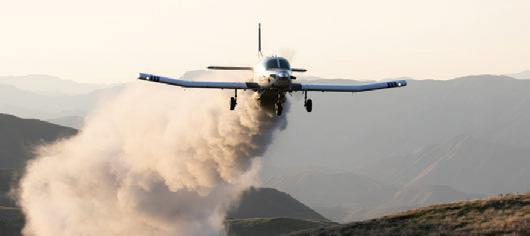
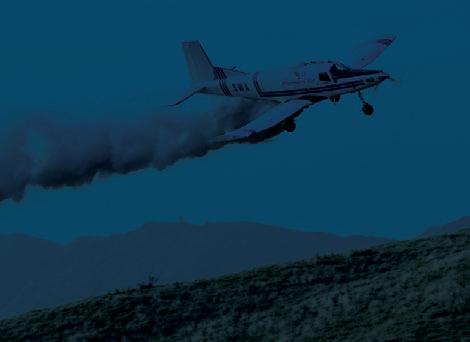


Calcium sources
Sources of calcium other than lime include Dolomite and various phosphate products. Dolomite is a favoured product that contains necessary magnesium that will be depressed if calcium is applied without regard to magnesium levels.
Acidic phosphates are not conducive to good microbial life, particularly fungi.


One of fungi’s functions is to hold calcium in the soil. Without fungi, 98-100 per cent of added
calcium can be lost from soils dependent upon acid fertilisers.


NZ authorities don’t acknowledge the di erence between calcium in the soil and the availability or not of calcium to plants.




If pH was considered low, the chances are agricultural lime may be applied in a bid to increase pH.



If the pH was satisfactory, then lime may not be applied at all. e reality is quite di erent.






You may not need to apply large amounts of lime, but you do need to apply calcium, not necessarily as lime.
If the biology in the soil has been nurtured, the results can be more than any application you will have made as nutrients are released from the soil.
Some soil test calcium gures have multiplied by nine-times the starting gure with modest inputs of calcium over a ve-year period. e key is the biology. With acid fertilisers having a negative e ect on soil microbes, most NZ farms will not capture the full bene t of lime applied in the traditional way; more so if boron is not added.
Our current wet winter and spring will have taken an extra toll on most nutrients, particularly where there are low microbial populations.
Calcium increases soil drainage characteristics, enhancing microbial life.

Dr William Albrecht (USA) demonstrated the e ect of calcium versus pH, when he grew soybeans with equal amounts of calcium as calcium

Page 31FERTILISER
Request a free sample! WAIKATO BASE MANAGER GLENN HAORA M: 027 927 3726 E: glenn@farmersair.co.nz www.farmersair.co.nz AERIAL TOPDRESSING AdaptaRate prescription rate mapping and variable rate spreading
New smart-phone app

DairyNZ
application
Applying effluent to land
Around 98 per cent of 4500 dairy farms in the Waikato region discharge e uent to land under the permitted activity rule. e remainder are currently working under consents to discharge treated e uent to water.
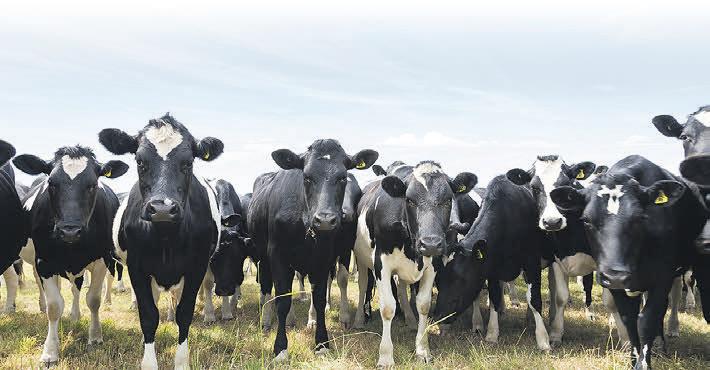
Applying e uent
E uent management systems in place on your farm should give you enough exibility so that you don't irrigate:
- When soil is waterlogged (too wet to absorb the e uent)
- If there is an equipment breakdown. Remember to cover water troughs when irrigating e uent. Protect waterways on your farm by:

- Not irrigating within 50 metres of a water supply


- Leaving a strip of non-irrigated land next to all watercourses – at least 20 metres wide
- Ensuring that spray drift isn’t getting into nearby streams or rivers.
Don’t apply too much
Soil can only lter so much e uent at a time.
It’s important to match the irrigation depth to the capability of the soil. Land with impeded or arti cial drainage, high or rising water tables or slopes of greater than seven degrees have a higher risk from over-application, and therefore application depths should be adjusted accordingly to re ect soil and weather conditions. Note this could be less than the maximum application depth stated in Waikato Regional Council rules.
Working out how much
Although e uent contains many nutrients which can impact on your farm management, it is the environmental e ects of nitrogen that determine how much you can irrigate onto land. Too much nitrogen can reduce pasture performance and reduce water quality in neighbouring waterways.
If you know eactly how much nitrogen is in e uent, you can work out the most e ective application rates for your land.
In the Waikato region, no more than 150 kilograms of nitrogen in e uent can be applied per hectare of grazed grass per year. You’ll need to

Most registered analytical laboratories o er this service for around $100. When used with a nutrient budget, this is a small cost compared to the fertiliser savings that can be made over time when e uent applications are timed e ciently.
e Overseer nutrient budget can be used to help determine how much land is needed for e uent irrigation.
How deep
Each e uent application must not be more than 25 millimetres deep. How deep you irrigate e uent over an area will depend on how much nitrogen you want to apply.
Regulations for applying e uent

In the Waikato region, applying e uent to land is a permitted activity.
is means farmers can apply e uent without having to get a resource consent, as long as you follow these conditions:
- No more than 150 kilograms of nitrogen can be applied per hectare, per year (1.5 applications at 25 mm deep and 0.04 percent nitrogen).
- e farmer/contractor must have contingency measures in place in case there is prolonged wet weather or a pump breaks down.
- Any ponds or e uent holding facilities must be sealed to reduce leakage.


- e farmer/contractor must spread e uent and sludge in a way that reduces odour and spray drift.



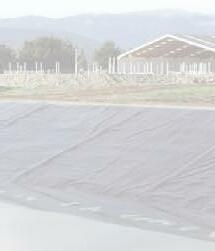
- Each e uent application must not be more than 25 mm deep.

- E uent must not run o the land into waterways.
- E uent must not pond on the land surface after application.
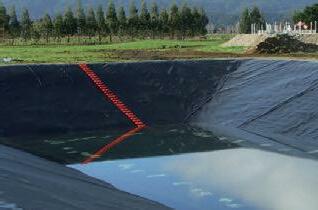
If asked by Waikato Regional Council, the person applying the e uent must be able to show that they have met the above conditions.
If you’re farm is not located in the Waikato Regional Council catchment, check the rules regarding e uent application with your local council.
Page 32 EFFLUENT & IRRIGATION
get e uent tested to work out how much nitrogen is going onto your land during irrigation.
has recently released a new smart-phone app to help farmers apply e uent more e ciently. e Dairy E uent Spreading Calculator app provides dairy farmers and e uent spreading contractors with guidance around nutrient application rates based on the depth and type of e uent they apply. e app allows for nutrient
rates for dairy e uent to be easily calculated, based on a number of customisable inputs so e uent nutrients can be applied with greater precision. Check out the DairyNZ website for more information. NATION WIDE
Safe swimming rivers
Ongoing contamination by a faecal bug has left just a fth of Taranaki rivers clean enough to swim in, according to a new assessment for Taranaki Regional Council.
e 20 per cent of rivers safe for swimming is only half the 39 per cent previously estimated by the Ministry for the Environment in computer modelling four years ago.
e new estimate is likely more accurate: the council’s Policy and Planning Committee was told it came from region-speci c modelling, while the earlier MFE gure was based on a nationwide model.
e Government’s new national freshwater standards call for 80 per cent of larger streams and rivers to be swimmable by 2030, and 90 per cent by 2040.
Challenging numbers
e new assessment by the company Land Water People found levels of Escherichia coli (E. coli) bacteria would have to be slashed by 80 per cent to meet the swimmability standards.
e committee chair Charlotte Littlewood says the stark numbers are a challenge.
“It’s quite a confronting paper and so whoever’s around this table after the elections, there’s going to be a lot of work to do.”

e scarcity of TRC testing sites means there is uncertainty about the exact E. coli gures, but a memorandum from the council’s environmental quality director Abby Matthews insists action will be needed to meet freshwater standards.
“Councils must use the best information available and take all practicable steps... Decisionmaking cannot be delayed on the basis of incomplete data and information, or uncertainty.”

Meeting swimmability targets will be a “signi cant” and “prominent” challenge when developing a regional plan to give e ect to the National Policy Statement for Freshwater Management.
Abby says reducing E. coli where people most often came into contact with the water will make rivers safer as sources of kai, as well as for swimming.
“ ere’ll be two things we’re looking at: one’ll be improving… particular swim spot sites and the other will looking more broadly across the wider range at what we can do to reduce E. coli.”
She says the NPS-FM requires councils to set limits on natural resource use, to reduce E. coli but the new report has not looked at what restrictions are needed.
“Most of the actions are fairly well-known: keeping stock out of waterways, improving e uent discharges, looking at critical source areas on-farm – so dairy-shed e uent, laneways, places like that – are always going to be your best bang for buck.”
As dairy farm resource consents come due for renewal, TRC is banning e uent discharges to water, and the council expects at least 85 per cent of e uent consents will require disposal to land by 2025, up from about 60 per cent in 2021.
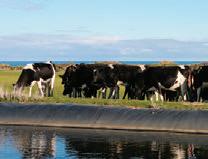
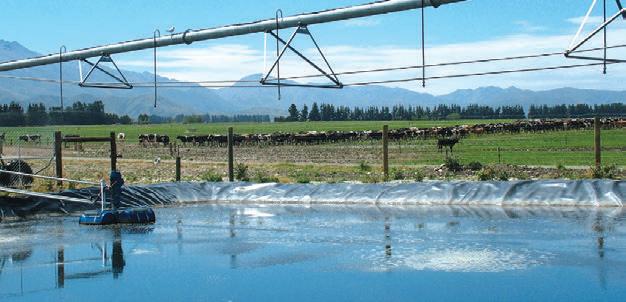
E. coli lives in the gut of warm-blooded animals and
is carried in faeces to waterways.
By itself it is not necessarily harmful but in rivers it indicates other disease-causing bacteria, viruses and protozoa are also present – such as campylobacter.
High E. coli levels at a few Taranaki estuaries are blamed on wild birds, but most testing sites are contaminated by farm animals.
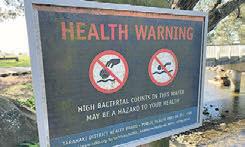
In 2018, the MFE estimated that action by TRC could see two-thirds of the lengths of Taranaki’s larger streams and rivers become swimmable by 2030.
Changing targets

e TRC said that was unrealistic and instead set a target of about half of those waterways.

But Abby says that was before the release of the NPS-FM and the target may change as the council consults the community – including hapū and iwi.
“ e [LWP] report does not consider what kinds of limits on resource use might be used… how limits might be implemented, over what timeframes and what, if any, implications this may have for other values and outcomes.”

“ ese will be matters for the council, tangata whenua and our community to consider.”


Abby says the report will be part of a wide range of information from the council and beyond.
“Alongside other sources of data, information and knowledge relating to the state of our environment… this report will help inform discussions with iwi and hapū.”
is year’s TRC State of the Environment report – the rst since 2015 – found only two Taranaki sites out of 15 met the swimmability standard, both located just downstream from Te Papakura o Taranaki national park.
Trends over 25 years showed E. coli improving in two of 10 sites and degrading in six. Over a 10-year period, two of 13 sites improved while nine deteriorated.
A 2018 report by NIWA for the TRC found streamside planting and keeping stock out of waterways had reduced E. coli levels, but not enough to make any more rivers safe.
“Changes in concentrations have not yet been large enough to result in an improvement in swimmability; the percentage of sites meeting current NPS swimmability criteria has remained low (27 per cent) since 2000.”
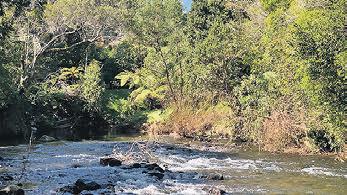
Page 33EFFLUENT & IRRIGATION
Craig Ashworth, Local Democracy Reporter
Rivers owing through urban parks and reserves have often already been contaminated by farmland upstream.
Some river mouths have permanent signs warning of health risks from bacteria loads where water birds have added to agricultural impacts.
• Dairy Effluent Ponds • Irrigation Dams • Canal Liners • Frost Protection • Dry Beds & Weeping Walls • Underpass Encapsulation P 0800 454 646 F 0800 454 640 E info@containment.co.nz W www.containment.co.nz Cost Effective performance in water & waste applications
Concerns raised over

A plan to put median barriers along State Highway 30 from Whakatāne to Awakeri is unworkable and absurd, according to farmers and businesses that use the road.

Waka Kotahi NZ Transport Agency, as part of its Road to Zero strategy, has plans to put exible wire barriers all the way from e Hub in Whakatāne to just east of Awakeri School, to prevent collisions caused by vehicles crossing the centre line.
It expects to begin construction in 2024.



Public concerns


Phil and Mark Brogden’s Awakeri-based business P J Brogden Contracting has been servicing farms all over the Rangitaiki plains for the past 47 years. ey and their sta spend much of their working day moving silage, hay bails, harvesters and other farming equipment and goods along the highway.

“When they put median barriers up, no one is going to be able to pass us,” Phil Brogden says.
“It’s going to be a complete cock-up.
“As it is now, there’s a couple of areas where we can pull o to the side of the road and give them a bit of space so they can overtake, but when these barriers go up, they’re going to be stuck behind us.
“What concerns us is that if there’s an emergency and the police, ambulance or re brigade need to get past, they’re not going to be able to.


“If any of the vehicles have a blow out or a break down on that main road, where are they going to go? at’s it, road’s closed.”
“Our slowest vehicle travels at 30 kilometres an hour,” says his son Mark.





“ e rest are around 40-to-50kmh. [Other road users] are getting impatient now, so their impatience levels are going to be through the roof.
“It’s no fault of our own. We pay the money to be on that road just like anyone else.”


e Brogdens have plenty of experience of some of the dangerous manoeuvres drivers carry out when stuck behind a slow vehicle and su er other drivers’ road rage.
“We get abused now. We don’t signwrite our gear anymore because we used to get rung up and abused.






“We get stu chucked out the windows at us, one ngered salutes – that’s now, and if all this goes ahead, who knows what’s going to happen,” says Phil.

He says it’s not always feasible to use the backroads.
“We can use the backroads for some of our clients, but we’ve got some clients that have dairy farms on State Highway 30.”
Waka Kotahi’s plan
Waka Kotahi NZ Transport Agency regional manager of transport services Jo Wilton says the stretch of highway had been identi ed as a “high-risk rural road, which can - and must - be made safer”.
“We are proposing a range of safety improvements including a safer speed limit and exible median safety barriers, which will be delivered as part of Road to Zero, Aotearoa New Zealand’s road safety strategy.
“Road to Zero sets us on a path to achieve Vision Zero, a New Zealand where no one is killed or seriously injured on our roads. Even the best drivers make mistakes, but these mistakes do not need to cost us our lives. We need to create a safe transport system; one that recognises humans make mistakes.”
Page 34 CARTAGE & EARTHWORKS
...continued
Mark Brogden and his partner P J Brogden administrator
Abby Fowler, Phil Brogden and farmer Louise McDonald, standing by one of the vehicles they drive along State Highway 30. Photo: Troy Baker.
ADDLINE TRANSPORT LTD
median barrier plan for SH30

“ is engagement is an important part of the design process. We need to understand how people use the state highway, their access ways, whether there are trucks or large vehicles using it, how shelter belts are maintained, where stock crossings

are and if we need to be aware of any future plans or development.

“ e team has a lot of people to meet, and this engagement is expected to continue through into 2023.”
Jo says between 2016 and 2020, two people were killed and 16 seriously injured on the road.
“Most of these crashes were speed-related and some were head on.”



Waka Kotahi consulted on safer speed limits in early 2022.
“Safer speed limits are something we can do now to improve safety, as the physical safety improvements will take some time to build. An announcement on the outcome of the speed review will be made before the end of 2022. Even when speed doesn’t cause a crash, it’s what will most likely determine whether anyone is killed, injured, or walks away unharmed from that crash.”
She says exible median barriers were a coste ective piece of infrastructure that could reduce the number of people killed or seriously injured in crashes by 75 per cent.
“It’s a no-brainer – they prevent head-on crashes.
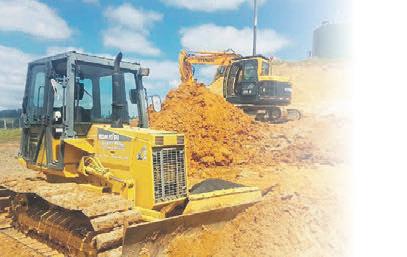
“When you hit a exible barrier, the cables ex, slowing your vehicle and keeping it upright.





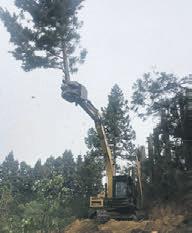


“ ey’re designed to absorb the impact, protecting you and others in the vehicle, ensuring your vehicle isn’t de ected into another tra c lane.


“If you want proof of their e ectiveness, you only need look around the motu. Several kilometres of exible median barriers were installed between Cambridge and Piarere in 2020. In the rst four months of installation, the barriers were hit 40 times. at’s 40 incidents, which could have otherwise resulted in serious head-on crashes.”
Safety barrier



Jo says when exible median safety barriers were installed, it did mean those entering the highway from a private access or side road would only be able to turn left, and they would have to use a safe turnaround area or roundabout to go in the opposite direction.
“In this case, roundabouts are being considered at high-use intersections, so people who have to turn left out of their driveway don’t have to travel too far if they need to turn around. ere will also be frequent slow vehicle pull-in bays along the route, which give space for slow moving vehicles such as tractors to pull over and allow faster vehicles to pass safely.”
Design phase










She says median barriers did not make it unsafe for emergency services. If a crash was blocking a lane, the barrier could easily be released and dropped, creating a bypass.
“Emergency services would also expect people to adopt common courtesy, ensuring they slow down and move their vehicle as far to the side of the road as safely possible. Emergency vehicles can also use the opposite side of the road to pass queued vehicles and access the incident.”
At the moment, this project is in the detailed design phase, she says.
“As part of this phase we need to talk with people about what we are considering. Waka Kotahi rst engaged with Whakatāne District Council and Ngāti Awa. Now that this has happened, wider public engagement will get under way, and this is where we are at now.
“Soon we’ll be having conversations with cycling groups, freight and heavy haulage representatives, the police and emergency services, people who live along or near SH30, as well as the Whakatāne Mill, and nearby businesses.”

Public events were also being planned and would be advertised.
“ is includes conversations with people who live up the side roads, like Angle, Fortune and Kope Drain roads. Letters are about to be sent to all landowners, informing them of our process and when to expect to hear from us.
Page 35CARTAGE & EARTHWORKS
continued...
Diane McCarthy, Local Democracy Reporter
Pete & Marcus
Purchasing a bit
David Brown tractors have been part of Sno Gillingham’s upbringing.




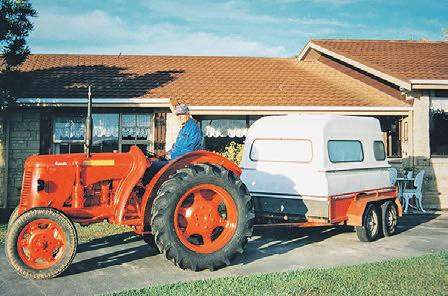
He remembers his father buying a David Brown Cropmaster, complete with a new plough in 1950, followed by another Cropmaster in 1952.
As a child as young as 10, Sno worked on the family farm using the tractors do work like ploughing and haymaking.
He remained on the family farm after school, learning how to farm.

Upgrade
“When I married June in 1966, we went 50/50 sharemilking and part of the deal was that I took one of the Cropmasters. I upgraded it later for something more modern but always stayed with David Brown as I progressed through the ranks to farm ownership,” says Sno.
In the early 1990s, Sno says he started to get a little nostalgic about historical things and looked for a Cropmaster.


“I found one in the Otorohanga area which was still more or less going but hadn’t been greatly used, so it became my project through the 90s.”
All in a name
e 1952 David Brown Cropmaster is an English general purpose farm tractor, not just cropping and horticulture as its name suggests.
It has a four cylinder, 25HP petrol engine, with six forward and two reverse gears, and a Category 1 hydraulic linkage system. ...continued





Sustainable electricity storage world first
A new organic, low-cost, safe, sustainable and long-life battery being trialled by Fonterra, could support greater energy security and distributed electricity generation for New Zealand.

PolyJoule, a Massachusetts Institute of Technology spin-o , is partnering with Fonterra on the application of the battery made from electrically conductive polymers, an organic based compound with the ability to act like metal.






Late last year the world’s rst industrial scale organic battery was installed on a Fonterra farm at Te Rapa. e battery was cycled daily, supporting dairy shed operations for 10 months.



e Co-op is now moving this battery to its Waitoa UHT site, which can be impacted by power disturbances leading to downtime and waste.
Fonterra chief operating o cer Fraser Whineray says as a signi cant electricity user at about 2.5 per cent of the national grid, a sustainable and secure electricity supply is vital to the co-operative’s local sales and exports.
“At Fonterra we have a strategy to lead in sustainability, and innovation partnerships are a critical ingredient to achieving this.
“ e PolyJoule battery has a remarkable discharge rate, which may ultimately link with ultra-fast charging







of our eet, including Milk-E our electric milk tanker.”
PolyJoule CEO Eli Paster is excited to partner with Fonterra and sees great opportunity for growth in New Zealand.
“We both have sustainability front and centre of our strategy and understand the importance of a reliable, green supply of electricity for quickly chilling the raw milk on farm, processing and distribution.
“New Zealand is a world leader in protecting the environment. Fonterra is a world leader in nutrition.
“We couldn’t think of a better partner to work with.
“Since PolyJoule batteries do not rely on lithium, nickel, or lead, the materials are easier to source and the batteries are safer and easier to manufacture anywhere in the world, including New Zealand.
“When you look at where the grid is heading and the number of batteries needed for the region, building a manufacturing base in New Zealand could create hundreds of new jobs and a new green energy hub.”

e PolyJoule battery installation is the third decarbonisation project Fonterra’s Waitoa site has recently adopted. Last month it announced the site would install a new biomass boiler and it will also be home to Milk-E - an electric milk tanker .
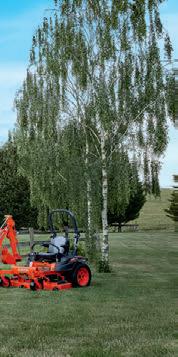
Page 36 FARM VEHICLES, MACHINERY & EQUIPMENT
Dashboard and dual seat of a David Brown Cropmaster.
At a show in 2002 with the David Brown Cropmaster and the restored hay sweep Sno used as a child on the family farm. Photos: Catherine Fry.
Ready for a tractor trek in 1998.
Cropmaster bonnet.
KUBOTA.CO.NZ 07 573 9107 4 Te Puke Quarry Road, Te Puke www.rrtractors.co.nz BX2380 $22,500 * +GST Fitted with LA344 Loader and RCK60 Mid-mount mower 23HP Kubota diesel engine Switching between mowing lawns & front end loader work has never been easier. The BX loader can be attached without leaving the driver’s seat Deluxe reclining high back seat, spacious operator area, cruise control and easy to reach controls *Image without mower deck. Price includes mower deck. ZD1221 30 HP Kubota 3-Cylinder Diesel Engine Cutting Height 25-127 mm, rear delivery Shaft Drive Deck & Hydraulic Deck Lift COMPETITIVE FINANCE AVAILABLE across the BX & Z Series KUBOTA’S LIFESTYLE RANGE
continued...
Sno stripped it right down, except for the engine as that was going well.
e petrol tank was rusted and it had been set up to use a little homemade can instead.

Help to x






Sno xed simple things like that himself, but the main body went to a panel beater, then Sno did the basic paintwork.
e Cropmaster has seating for two which is a little unusual, but Sno jokes that it provided room for the farmer to take a kid out with them to give the wife a break!

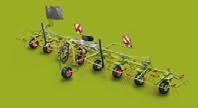




“I got drawn into the David Brown Club of New Zealand and the Waikato Vintage Tractor and Machinery Club and I really enjoy the social side of it.”
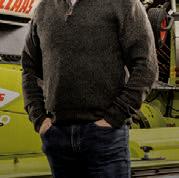





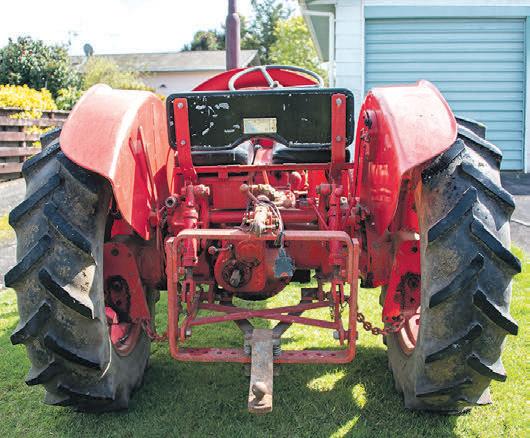
e Cropmaster had a little adventure all of its own during a tractor trek in the Manawatu area. It started overheating on the trek and the head gasket blew.
“I had to get it xed in Feilding so I could continue and when I got home I had to get the engine reconditioned.”






ere is a bit of a running joke amongst the hardy tractor trekkers that if there’s something wrong with your tractor, take it on a trek and you’ll have the whole expertise and skills of the other trekkers on hand to help get it xed!

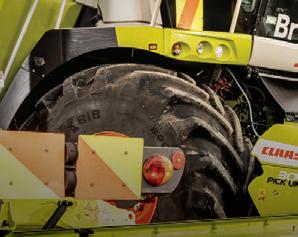

Page 37FARM VEHICLES, MACHINERY & EQUIPMENT
of nostalgia
Catherine Fry
Sno’s Cropmaster has been fully restored.
A Category 1 hydraulic linkage system on the back of the Cropmaster.
Sno Gillingham and his 1952 David Brown Cropmaster.
LAN2519
KEVIN WHITE OF BRADFIELDS
CONTRACTING TALKS ABOUT CLAAS GRASS HARVESTING EQUIPMENT With up to 50 operators out in the field and as many pieces of equipment during peak harvest; reliability and efficiency are key for Kevin and Kirsten White in the South Waikato. Bradfields covers a relatively vast area from as far south as Waiouru, Kawhia in the east and the Bombays in the north. This big catchment means harvesting a wide range of farm types and some hard land contours under the usual time pressure at peak harvest. For Kevin this means ‘purchasing the market leader for gear.’ This is where the CLAAS equipment and the support he gets from CLAAS Harvest Centre come in.
KEVIN
WHITE Bradfields CLAAS DISCO MOWER CLAAS LINER RAKE CLAAS VOLTO TEDDER BAY OF PLENTY 292 Te Ngae Road, Rotorua Craig Macdonald 027 223 3365 Glenn Davidson 027 223 3363 claasharvestcentre.com THE PROFESSIONAL’S CHOICE “ FOR US IT’S THE RELIABILITY OF THE CLAAS GEAR. THEY GO OUT IN THE MORNING AND COME BACK IN THE EVENING, JOB DONE. ”
classified listings

















Nov 5
Crop Swap, 9.30-10.30am, 45 Beach Rd, Katikati. Ph 07 549 2337.
Tauranga Rose Show, 11am, Wesley Hall, 13th Ave, Tauranga, $3.

plants
services
Ph/txt 027 222 6081.





Nov
Scarecrow Festival, 11am-2pm, free Hamilton Gardens. Garden Ramble, 9.30am-4pm,


from the i-Site, Te Awamutu. Ph/txt Alison 027 284 8776.
Nov
omas, 1-3pm, Memorial Hall, Katikati, $10. Tickets from theartsjunction.org.nz
Nov 10-13
Pacific Rosebowl Festival, Rogers Rose Garden, Hamilton, free. See tinyurl.com/bp5jsfzf
Nov 12-13
Hamilton Rose Show, noon-5pm, Hamilton Gardens, $5 or $2.50 gold card.
Waihi Garden Ramble, 9am-4pm, $30. See htinyurl.com/ yc6w294y or ph/txt Margaret 021 058 7667.
Thames Heritage Festival See thamesheritage.nz/ heritage
Nov 13
Plant Sale, Te Puna Quarry Park, 10am-1pm, near Tauranga, cash only. Last one before Christmas, will include pots, garden tools, etc. Ph/txt Shona
027 497 3400.






Nov 17
Ruud Ramble, 4-5.30pm, Kati KaiWay, Katikati, $15. Ticket info from tinyurl.com/3hh28dss
Nov 17-20
BOP Garden & Art Festival. See gardenandartfestival.co.nz
Nov 19
Amore Roses Open Day, 9.30am-4pm, Newstead, near Hamilton, free. See amoreroses.co.nz Paeroa Garden Ramble, $25. Tickets from Janet 027 273 7853 or Arkwright’s in Paeroa
Nov 20
Cambridge Garden Festival, 9am-4.30pm. See www.cgf.nz/shop
Nov 24
Bell Peppers, Chillies and Feijoas, 7.30pm, Waikato
Horticultural Society talk, Gate 2, Hamilton Gardens. All welcome, $5. Ph Carmel 07 855 3404.
Nov 25-26
Te Awamutu Rose Show, 1-6pm (Fri) & 9.30am4pm (Sat), Baptist Church, Te Awamutu, $3 (children free). Ph/txt Diana 027 575 6505.

Nov 26
Soap Play & Create, 10am-2pm, Fraser High School, Hamilton, $45, kidfriendly. See tinyurl.com/5n6 m6h
Nov 27
Plant Fest, 9am-2pm, Tauranga Racecourse, $15/ $18, door sales not guaranteed. See tinyurl.com/ mt824m3p




Nov 28
Christmas Fair, 10am-2pm, Athenree Homestead, between Waihi and Katikati. See athenreehomestead.org.nz
Dec 2-4



Iwitahi Native Orchid Reserve Working Bee. Accommodation near the site on the NapierTaupo highway. Ph Keith 07 871 1774.
Dec 3
Crop Swap, 9.3010.30am, 45 Beach Rd, Katikati. Ph 07 549 2337.


Dec 4
Tree Planting Day, 10.30am -12.30pm, Minogue Park, Hamilton, free. See tinyurl.com/2p8dmeht King Country Garden Ramble. Email tidygardens@xtra.co.nz

Building resilient rural communities


Rural Women New Zealand always try to look on the bright side of life, but they also believe in having a plan just in case something goes wrong.
is is why they are teaming up with the Western Bay of Plenty District Council to hold a On the Block: making the most of rural life event, focusing on what people in rural regions should do if a disaster occurs.
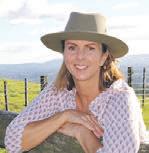
e event is being held on November 26 at the Oropi Hall, from 10am-4pm.
A presentation on Emergency Management and Safety in Rural Areas by Paul Mason and Jo Lynskey from the WBOP District Council will start at 1.30pm.
FMG will also be holding a Rural Crime Prevention Workshop from 10am-12pm.
Emergency Management is the new term for Civil Defence, but the same advice still stands - be prepared; have a plan for home, work and school; and know your neighbours.

What would you do if there was an extended power outage in your region resulting from a storm or volcanic eruption?
How would you communicate with emergency services if your phone ran out of charge?
Do any of your neighbours have medical training?
“Knowing your neighbour’s name means you’re more likely to look out for each other, especially during an emergency,” says Jo.
“Getting to know your local community is probably even more important for those living in rural regions than for urban

residents. Learning who in your area is a nurse, who has a vhf radio and who has clean drinking water could be vital.”

Paul, a safe and resilient communities’ advisor, will address protecting your rural property and how something as simple as asking your neighbour to collect your mail when you go away can reduce the rate of rural crime.
Experts will also be on hand to answer questions on ‘How to Care for Chickens’, and children will be able to see chicks in the playground behind the Oropi Hall from 10am until 4pm.
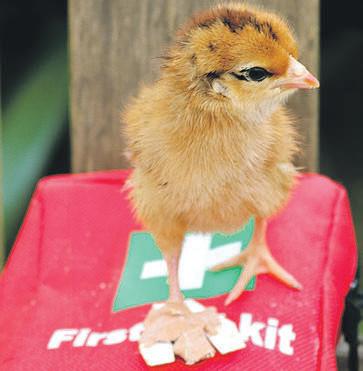
“Anyone from a rural area, from Pahoia to Pongakawa, is welcome to come along,” says RWNZ leader Mary McTavish.
“However, we would like to extend a special invitation to those living on lifestyle blocks that don’t fall under the umbrella of other organisations such as Federated Farmers or New Zealand Growers.”

Entry is by gold coin donation, which will put you in the draw to win a ra e.
For more information, visit: rwnztauranga on Facebook, Twitter and Instagram.
Page 38 COAST & COUNTRY NEWS LIST YOUR EVENT HERE! email with ‘Rural Event’ in the subject line to: editor@ coastandcountrynews.co.nz (must be under $50 or free)
Includes
for sale.
6
tickets
10 Rustic Wedding, a oral presentation by Francine curriculum vitae CV’s THAT STAND OUT. Don’t let your C.V. get lost amongst all the others. Get the WOW factor. A C.V. For You can provide you with a personal and professional touch. From scratch or update existing ones. Check out samples on www. facebook.com/acvforyou or Ph/text on 021 27 27 912. for sale PULLETS HY-LINE BROWN, great layers. Phone 07 824 1762 www.eurekapoultryfarm.weebly.com * your listing * DO YOU HAVE something to sell or looking to buy or promote your business? List it here for only $23 for up to 20 words. Email office@ thesun.co.nz or call 07 578 0030.
professional
Phone Felicity today :07 578 0030 or email office@thesun.co.nz Advertise Here... 5cm H x 7.3cm W for only $120+gst
‘On e Block’ will be held on Nov 26 and will include rst aid tips for raising chooks.
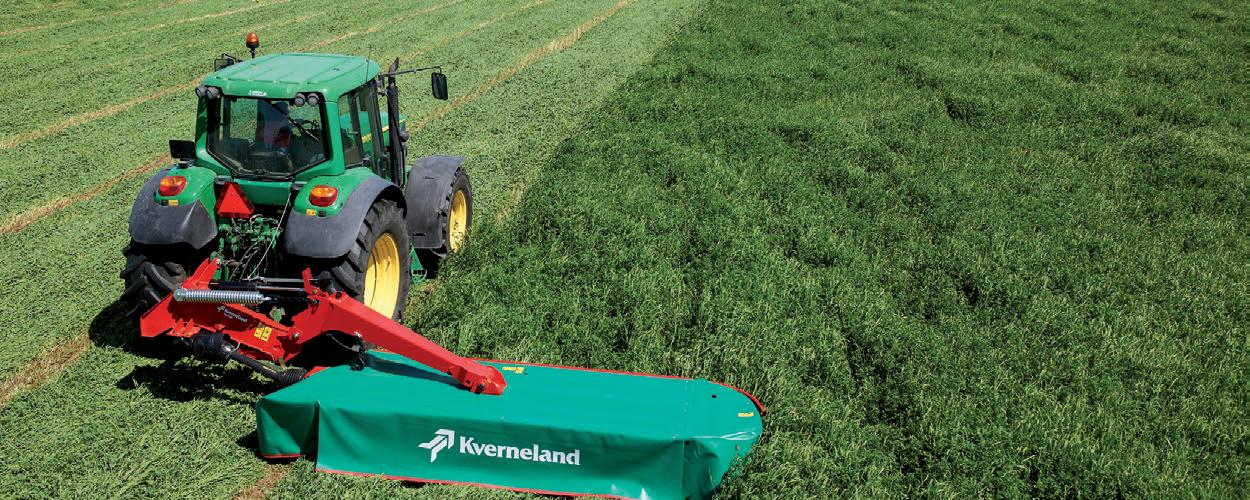



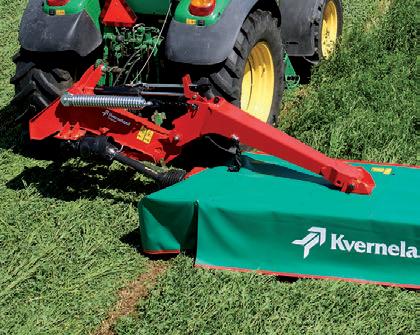

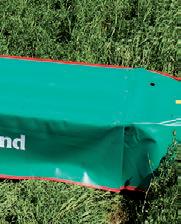
















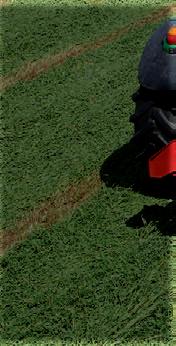


































Page 39COAST & COUNTRY NEWS The only mower with round discs. This gives better cutting and it leaves no pinch point for rocks to get caught. THE CUTTERBAR WITH ROUND DISCS The cutter-bar will swing backwards and up when hitting an obstacle and return to working position automatically (Instant reaction / non-stop). NON-STOP BREAK-BACK DEVICE The mower is lifted via the hydraulic cylinder – there is no need to activate the 3 point linkage of the tractor. EASY LIFT ON HEADLANDS GET YOUR SEASON SORTED WITH THE KVERNELAND MOWER RANGE READY FOR GRASS? 2.95% INTEREST † 1/3RD IN 12 MONTHS 1/3RD DEPOSIT NOW 1/3RD IN 24 MONTHS 2 YEAR WARRANTY deutz nz We’re ready to do whatever it takes to keep you growing this Spring. Deal’s not quite right? Ask our team about our flexi finance options. *Terms, conditions & normal lending criteria applies. 30% deposit, 2.95% interest rate, monthly payments over a 36 month term. GST paid month 3. While stocks last. Offer ends 30th November 2022. Images may show optional extras and may differ from product advertised. ** Not available on all models •FARMotion 4 cylinder Tier 4i engine • Trima self-levelling loader •Wet clutch power shuttle •60 x 60 transmission •True four wheel breaking •Stop N Go function •SDD – high speed steering system** •Hydroblock cabin suspension** 5 Series PUKEKOHE 0800 570 571 MORRINSVILLE 07 889 5059 TE AWAMUTU 07 870 2411 TAURANGA 07 543 0021 WHAKATANE 0800 77 88 99 ROTORUA 07 349 6528 GISBORNE 06 868 8908 Power Farming NZ † Terms, conditions & normal lending criteria applies. 3 equal payments over 24 months. GST paid month 3. Offer ends 31st October 2022.



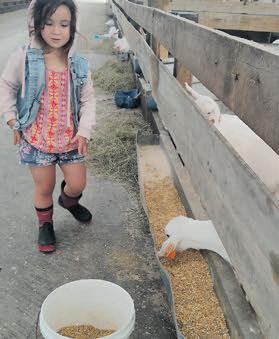

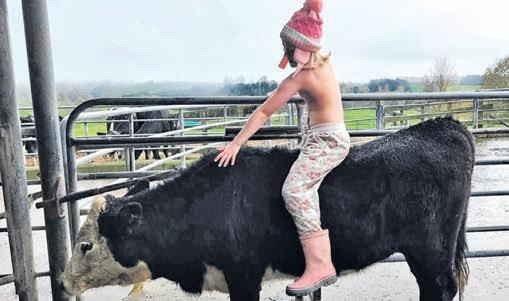







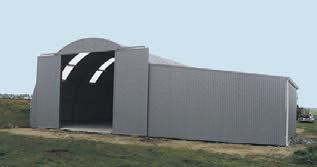

















Page 40 COAST & COUNTRY NEWS
Violet aged 6 andher bee e mate inthe King Country.
Arthur aged 9 1/2months having a splash in Matamata.
Blake, 5, loves helping with the baby Goats on the farm in Matamata.
Nellie Poole feeding her pet lamb called Nikau in Taumarunui.
Blake, 2, and Devon, 1, giving mum a hand to feed out the calve meal in Waimana.








































































 Letitia Atkinson
Letitia Atkinson
























































































































































































































































 hydroponic system.
hydroponic system.












































 Plant & Food Research scientist
Plant & Food Research scientist


























































































































































































































































































































































































































































































































































